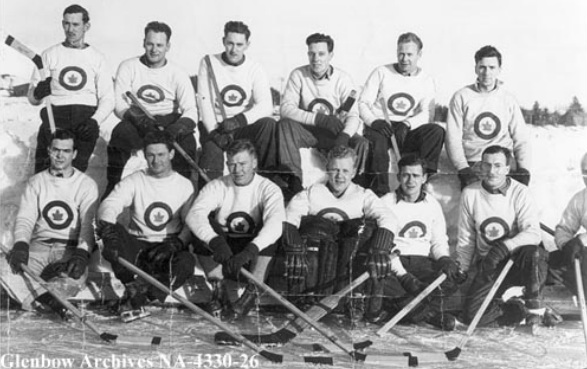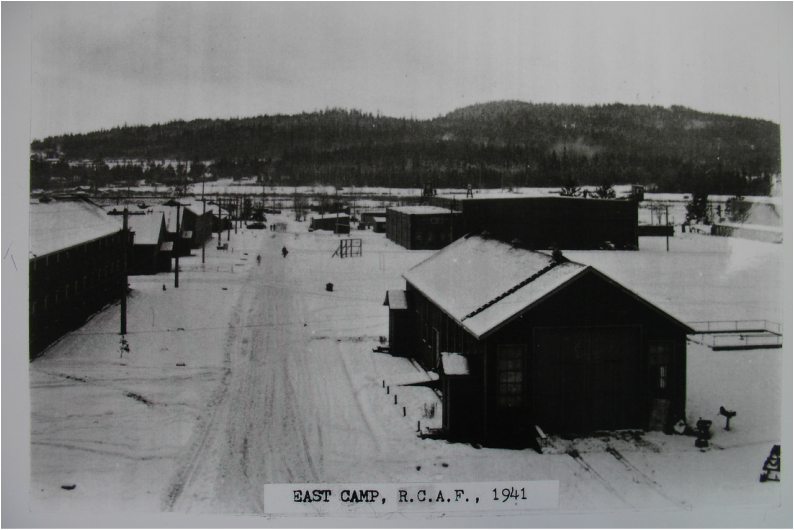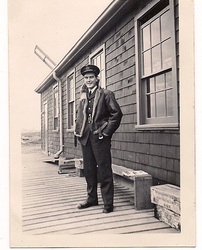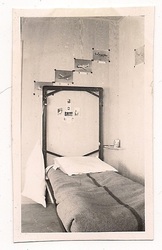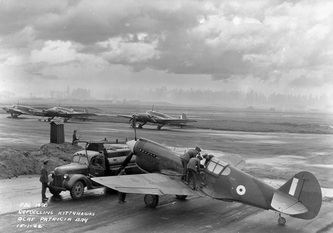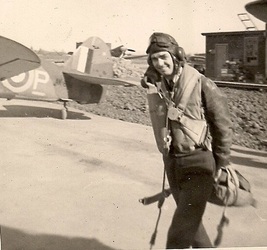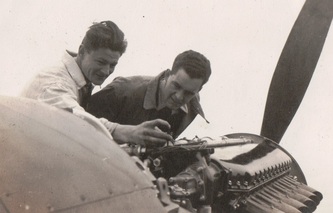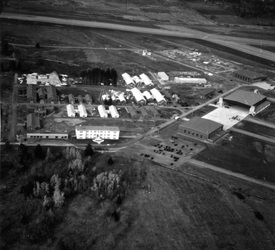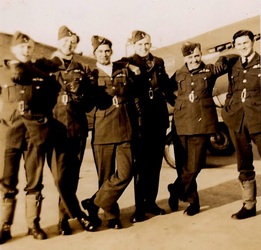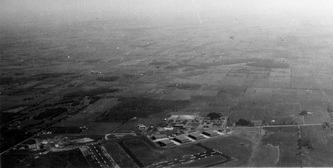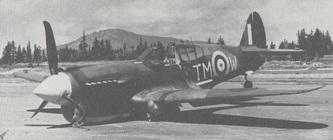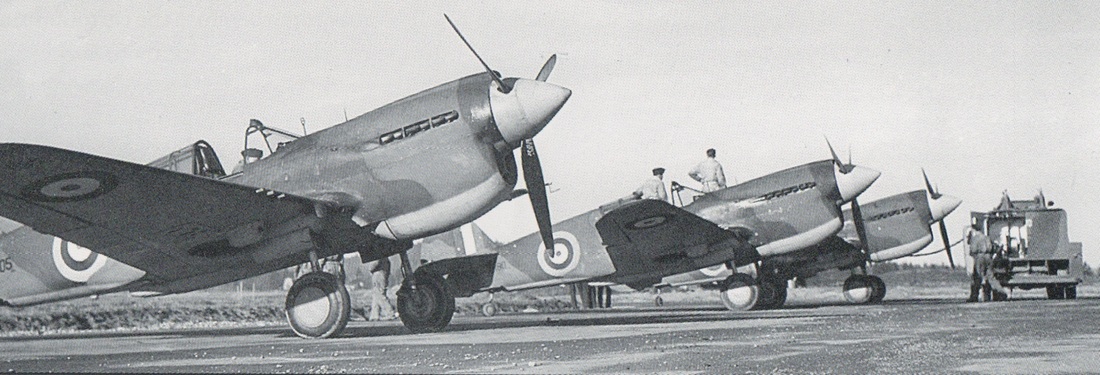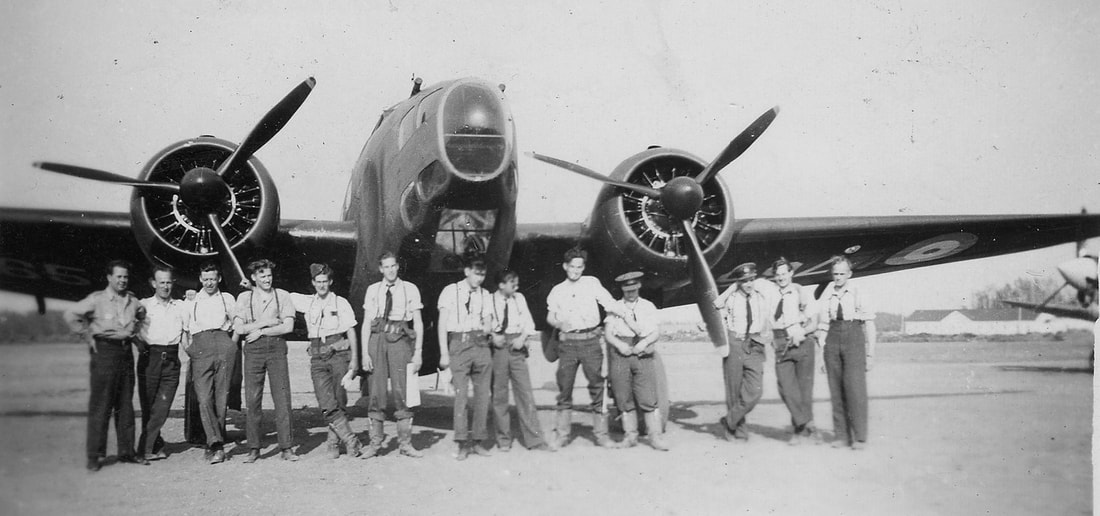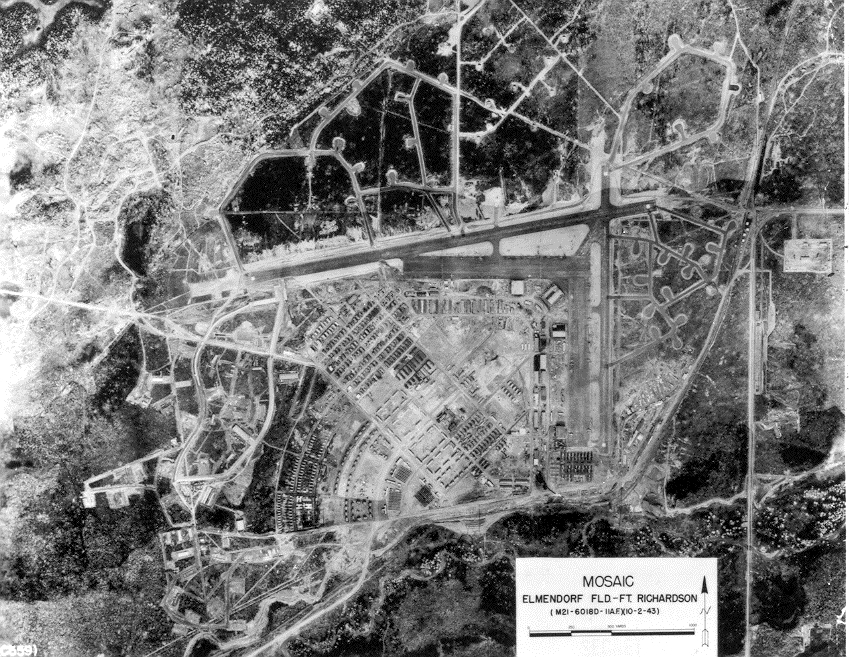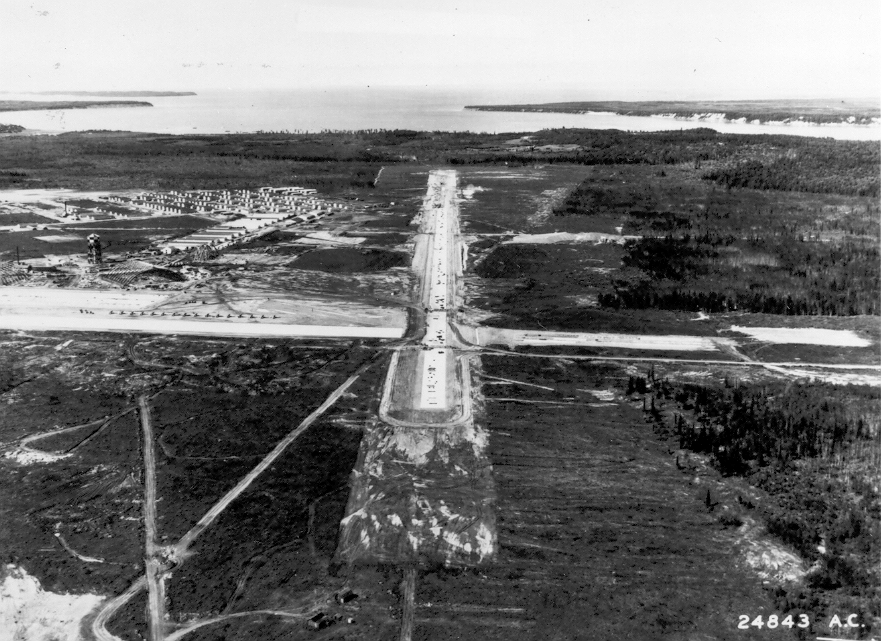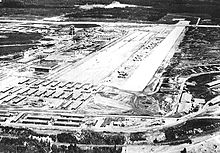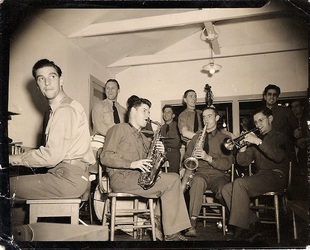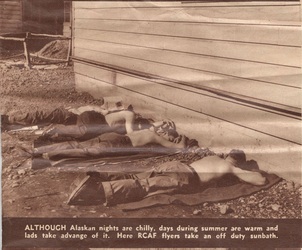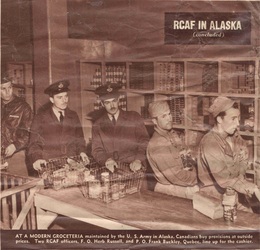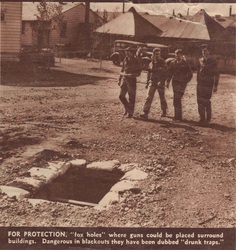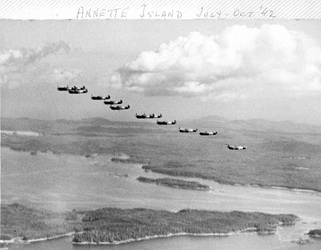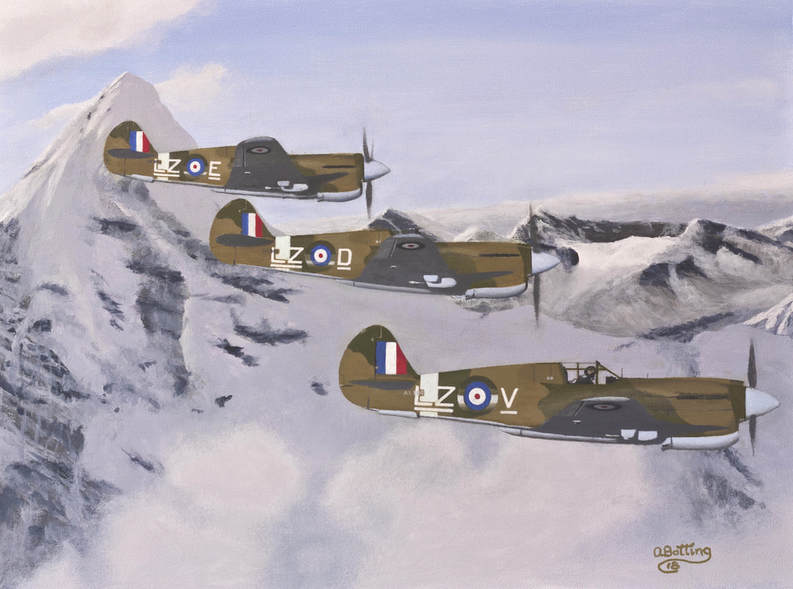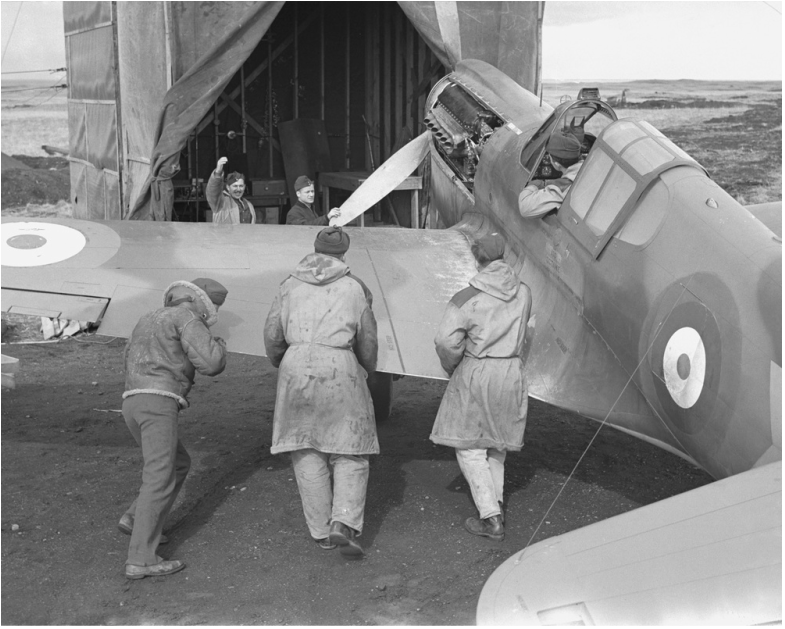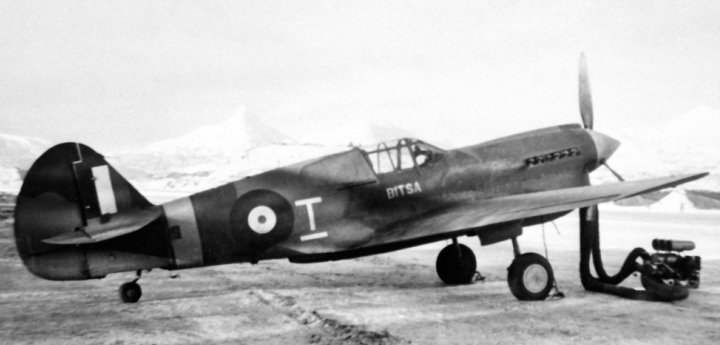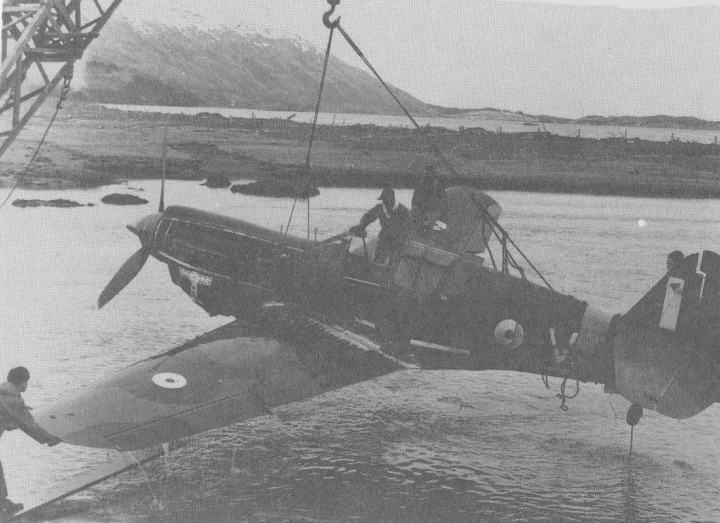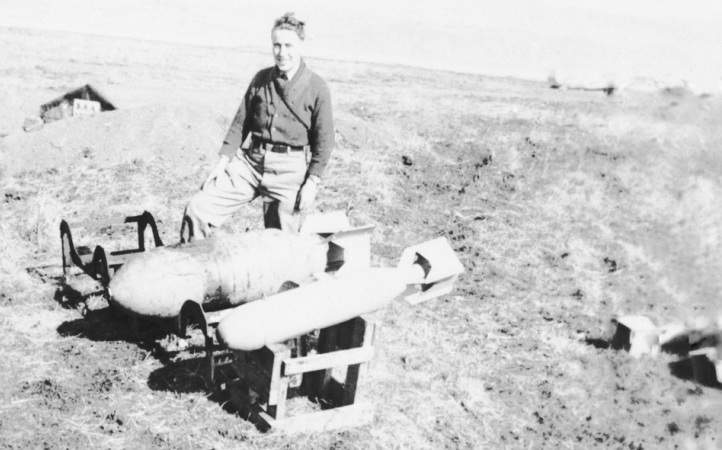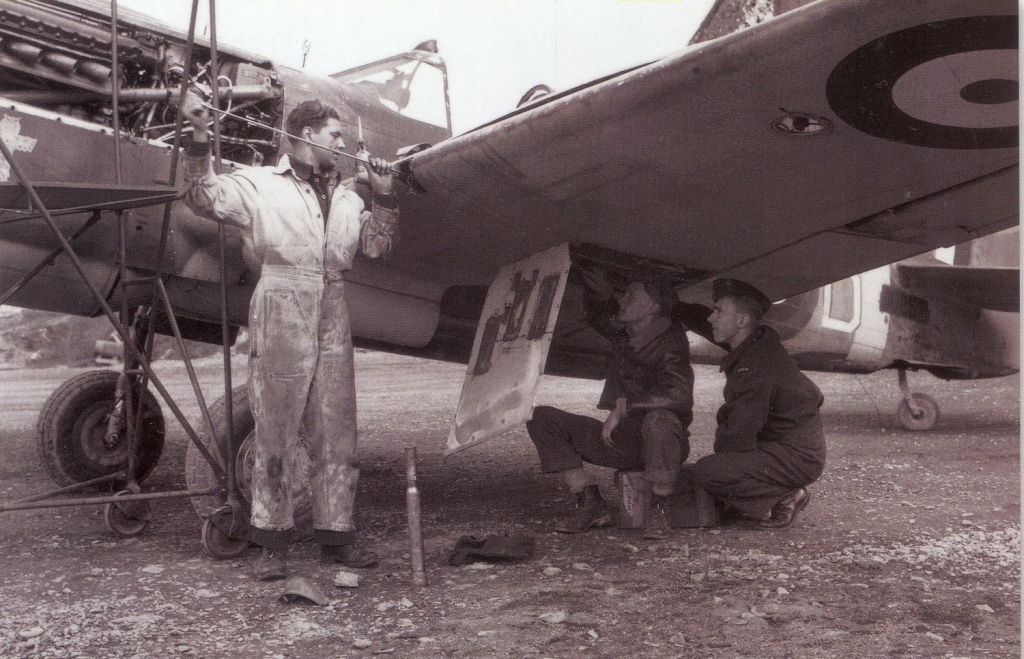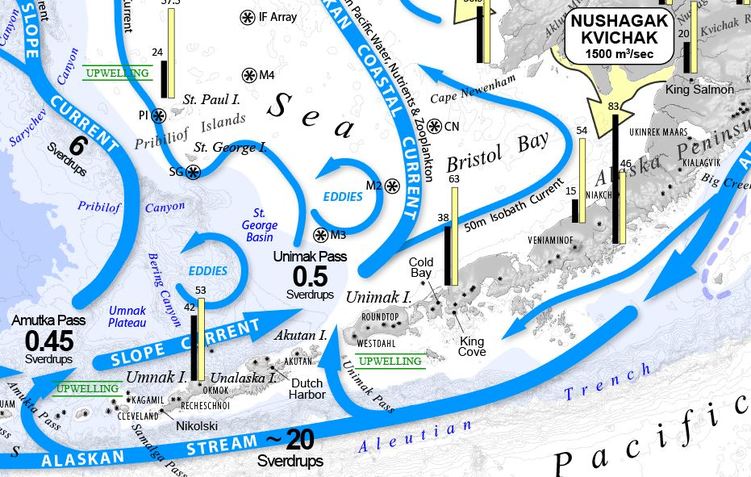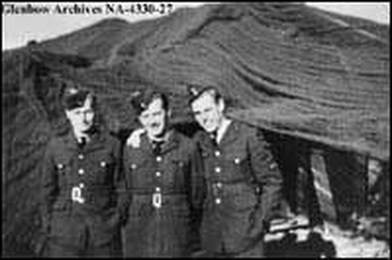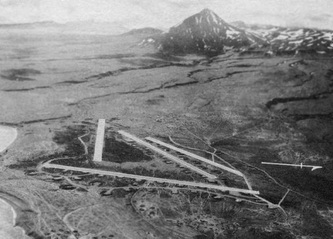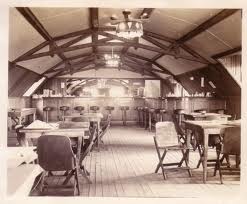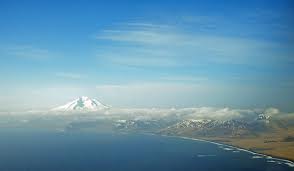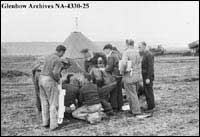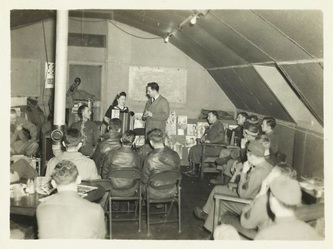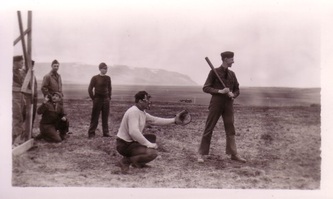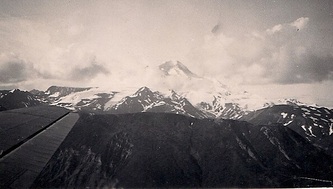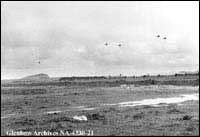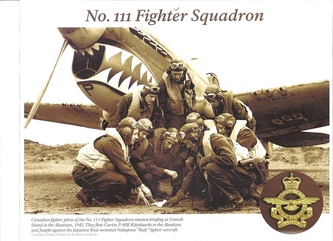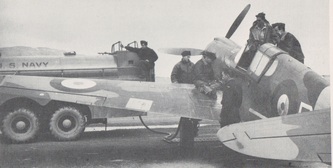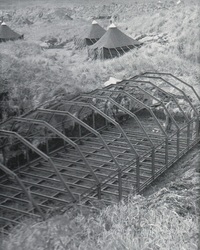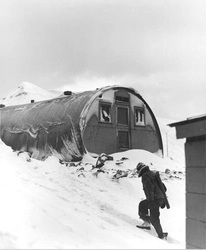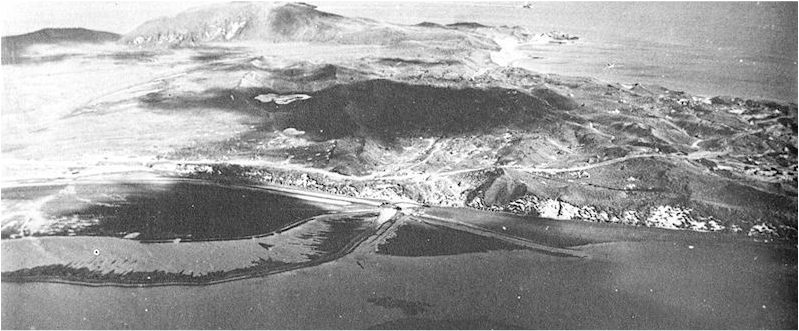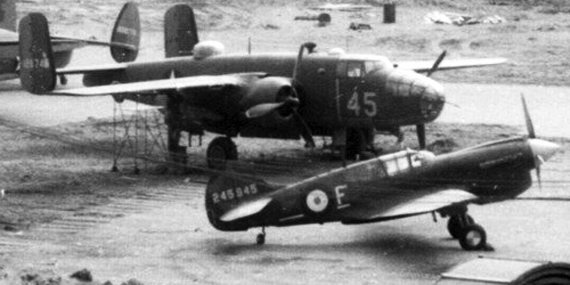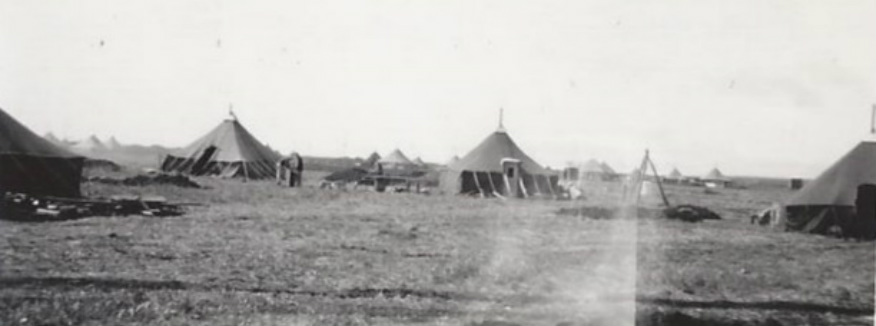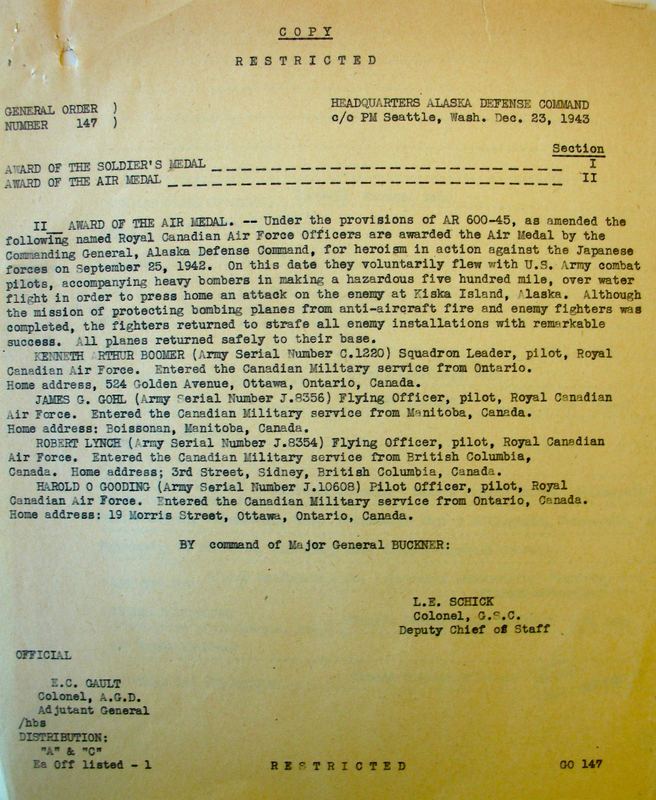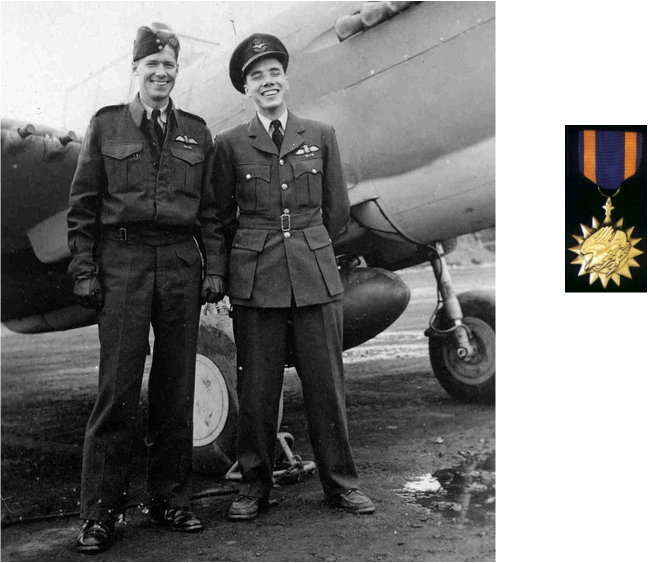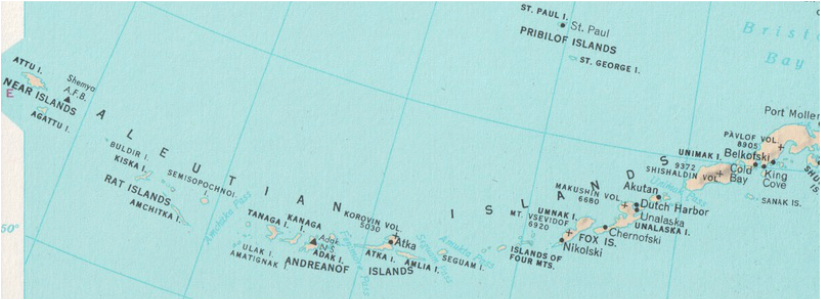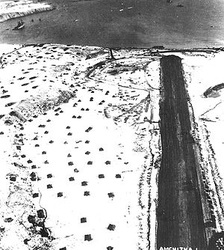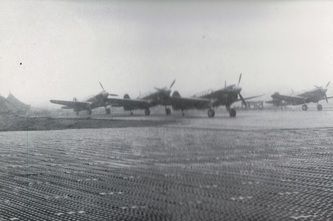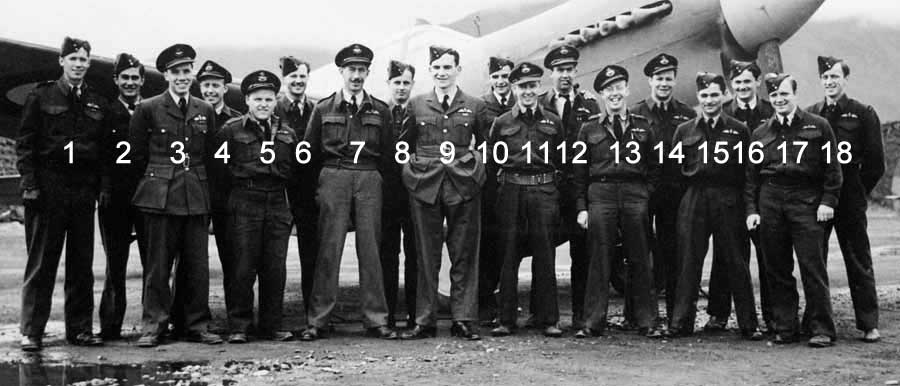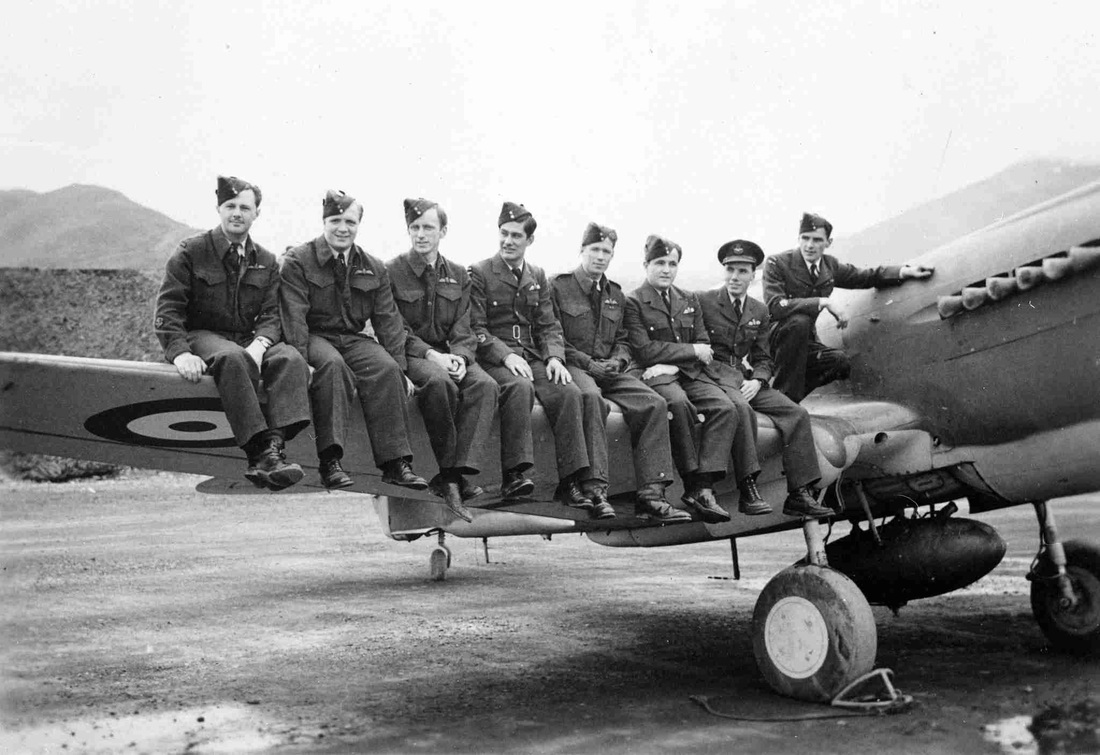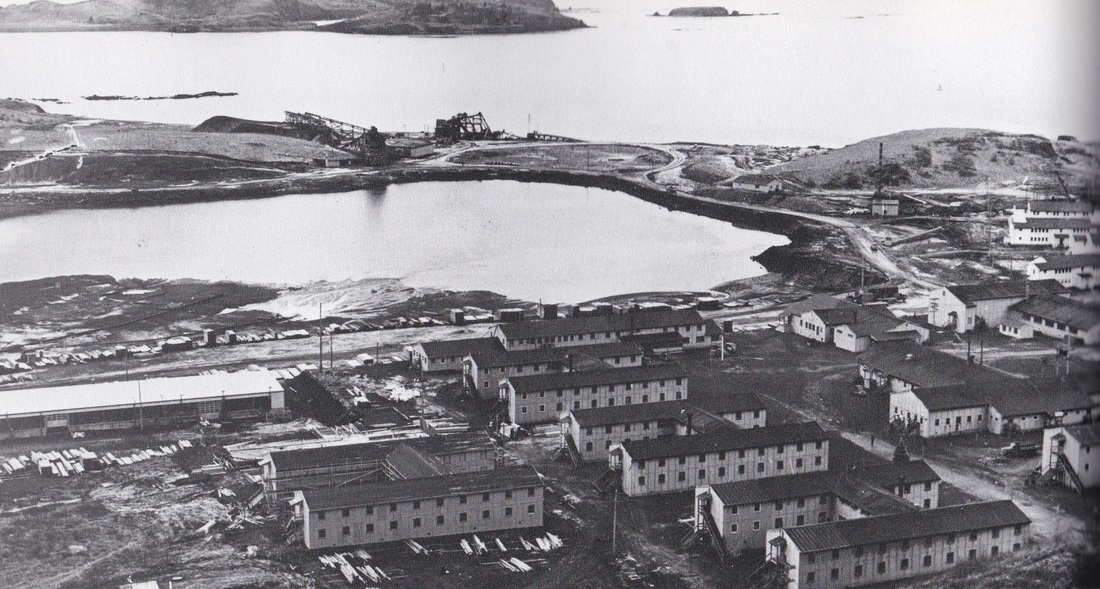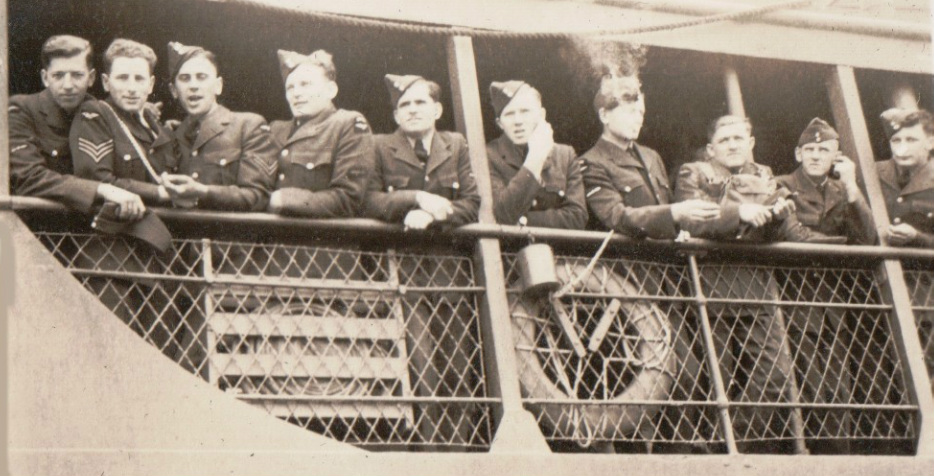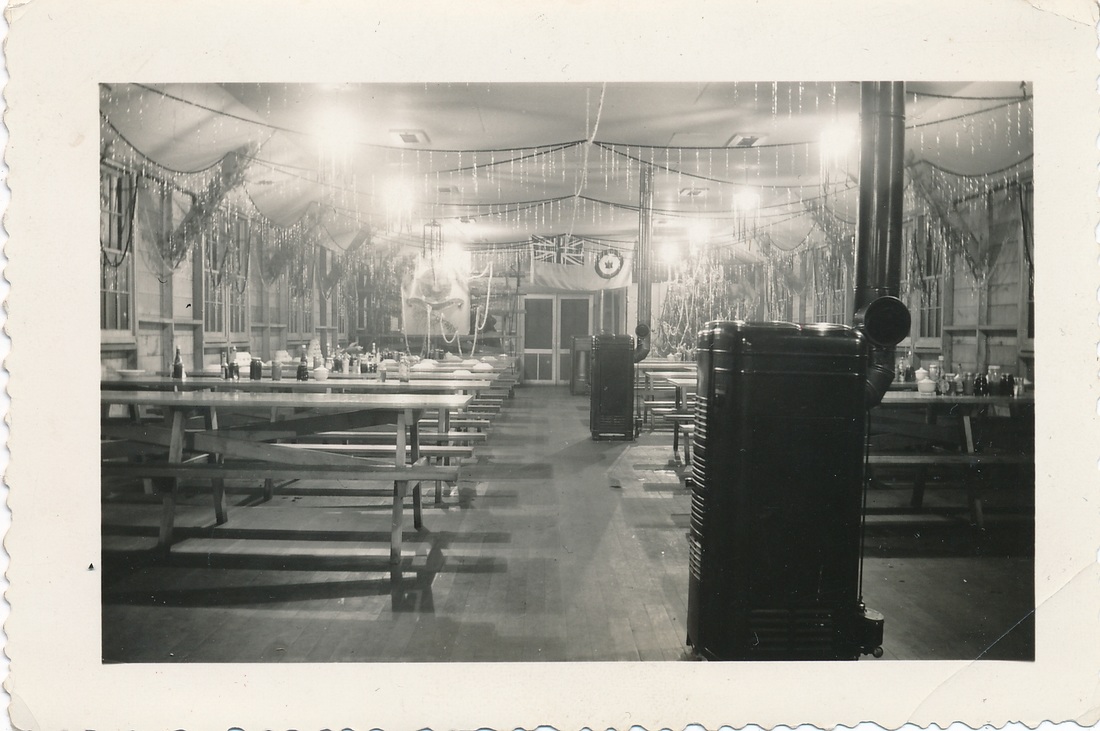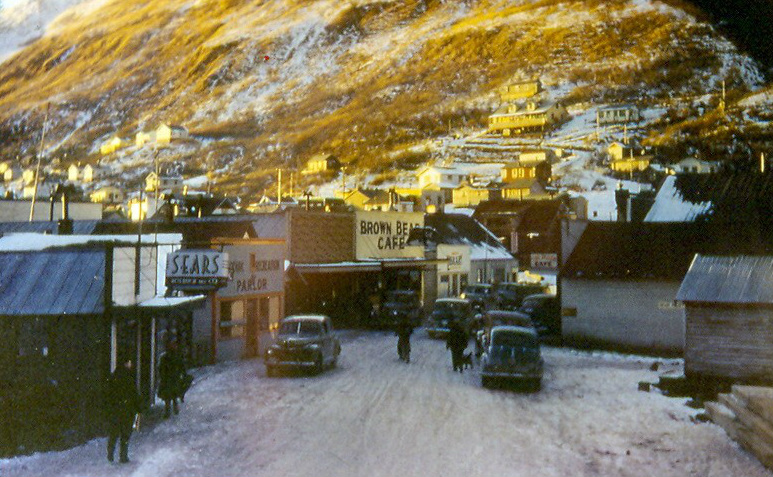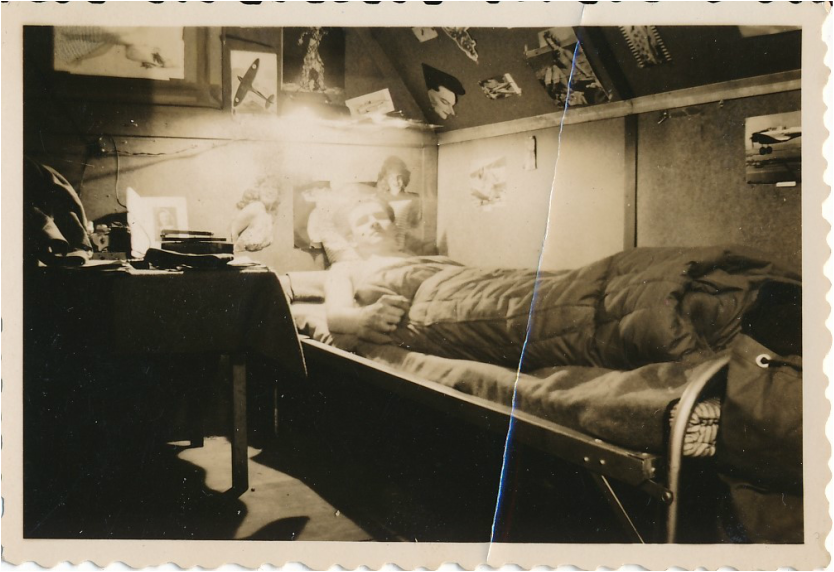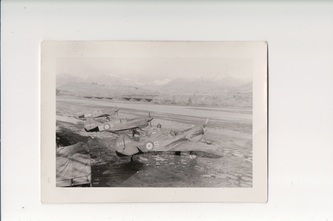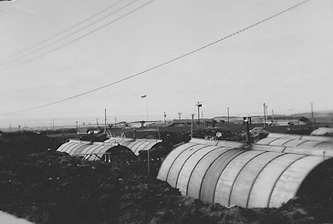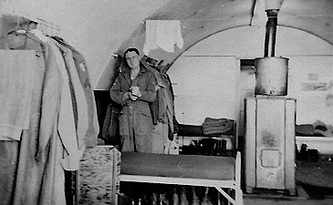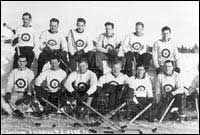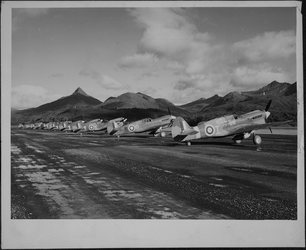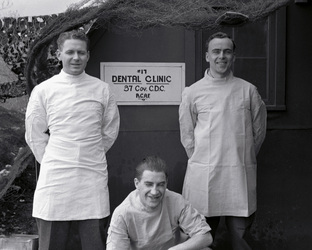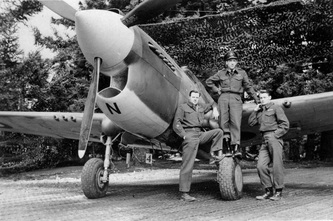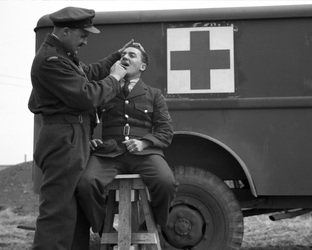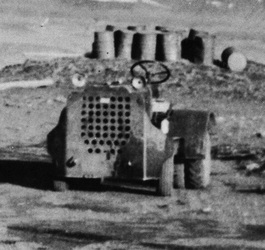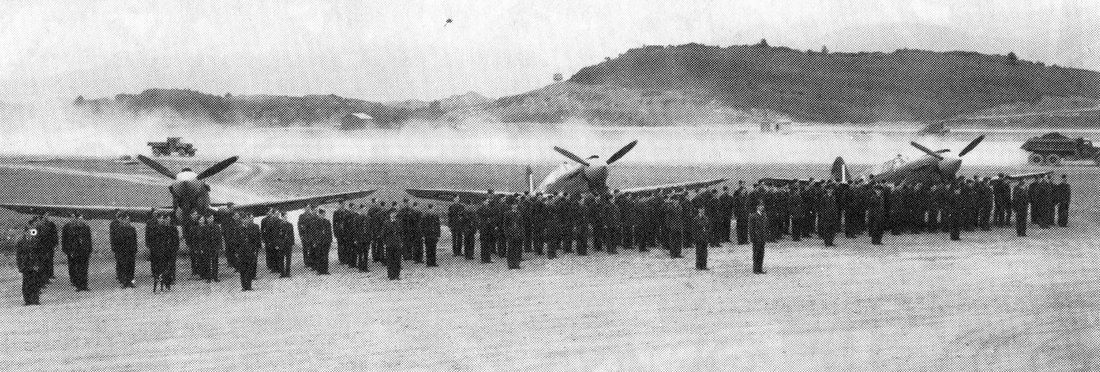LIFE in 111 Squadron
Royal Canadian Air Force Championship hockey team, Kodiak Island, Alaska. Date: Fall 1942
Back row L-R: Bert Dalzell; Norm Middleton; Godfrey Holton; Bill Manzer; Ren Baker; Sunny Lundstrum. Front row, L-R: George Grindrod; "Ike" Troughton; Fred Ferris; Milt Hannigan; Merton "Ed" Burk; Tom Walsh; Ralph Nicol (only his arm is visible). All of these men were in 111 Squadron. They had an undefeated 20 game "season."
Note: According to Kathi Baker, Ren's Daughter, her Father is incorrectly identified in this picture. She said he is actually 2nd from left, back row. If so, is the guy identified as Baker actually Norm Middleton?
Identification listing on the Glenbow Archives site
This page is perpetually under construction
materials describing what service life was like on these bases during WWII will be gratefully received and added
Back row L-R: Bert Dalzell; Norm Middleton; Godfrey Holton; Bill Manzer; Ren Baker; Sunny Lundstrum. Front row, L-R: George Grindrod; "Ike" Troughton; Fred Ferris; Milt Hannigan; Merton "Ed" Burk; Tom Walsh; Ralph Nicol (only his arm is visible). All of these men were in 111 Squadron. They had an undefeated 20 game "season."
Note: According to Kathi Baker, Ren's Daughter, her Father is incorrectly identified in this picture. She said he is actually 2nd from left, back row. If so, is the guy identified as Baker actually Norm Middleton?
Identification listing on the Glenbow Archives site
This page is perpetually under construction
materials describing what service life was like on these bases during WWII will be gratefully received and added
Life in 111
RCAF No. 111 (F) Squadron operated out of eight locations. Each setting was quite different from the others and some settings imposed very Spartan conditions. Each of the locations will be considered separately with pictures and accounts (as they become available) from the men who had the experiences.
All the western settings had one thing in common: the Pacific Ocean. Weather conditions and the challenges of learning to fly close to the surface of the water (to bomb, strafe or identify what was found there) were what exacted the greatest toll on 111 Squadron.
The settings:
RCAF Station Rockcliffe, Ottawa, Ontario (November 1, 1941 - December 13, 1941)
Patricia Bay Air Station, British Columbia (January 19, 1942 - June 3, 1942) and (August 19, 1943 - January 20, 1944)
Elmendorf Air Force Base, Anchorage, Alaska (June 8, 1942 - October 30, 1942)
detachment to: Fort Glenn Air Base, Umnak Island, Aleutians (July 16, 1942 - October 10, 1942)
Fort Greely, Kodiak Island, Alaska (October 31, 1942 - August 12, 1943)
detachment to: Chiniak Base, Kodiak Island, Alaska (November 6, 1942 - April 24, 1943)
detachment to: Fireplace Airfield, Adak Island, Aleutians (September 21,1942 - October 8,1942) and (May 4 1943 - May 14, 1943)
detachment to: Fort Richardson, Amchitka Island, Aleutians (May 15, 1943 - July 9, 1943)
All the western settings had one thing in common: the Pacific Ocean. Weather conditions and the challenges of learning to fly close to the surface of the water (to bomb, strafe or identify what was found there) were what exacted the greatest toll on 111 Squadron.
The settings:
RCAF Station Rockcliffe, Ottawa, Ontario (November 1, 1941 - December 13, 1941)
Patricia Bay Air Station, British Columbia (January 19, 1942 - June 3, 1942) and (August 19, 1943 - January 20, 1944)
Elmendorf Air Force Base, Anchorage, Alaska (June 8, 1942 - October 30, 1942)
detachment to: Fort Glenn Air Base, Umnak Island, Aleutians (July 16, 1942 - October 10, 1942)
Fort Greely, Kodiak Island, Alaska (October 31, 1942 - August 12, 1943)
detachment to: Chiniak Base, Kodiak Island, Alaska (November 6, 1942 - April 24, 1943)
detachment to: Fireplace Airfield, Adak Island, Aleutians (September 21,1942 - October 8,1942) and (May 4 1943 - May 14, 1943)
detachment to: Fort Richardson, Amchitka Island, Aleutians (May 15, 1943 - July 9, 1943)
RCAF Station Rockcliffe
(November 1, 1941 - December 13, 1941)
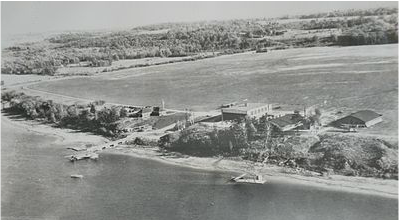 RCAF Station Rockcliffe, 1936
RCAF Station Rockcliffe, 1936
In early November, 1941, No. 111 (F) Squadron formed at RCAF Station Rockcliffe near Ottawa, Ontario. S/L Nesbitt took command here. He had orders to get his squadron ready to be part of the active operations in Europe. On November 8, 1941, the first pilots arrived, fresh out of Service Flying Training Schools. On November 9, the first ground crew arrived. On November 11, the first two Kittyhawks (P-40E) arrived from Curtiss-Wright, Buffalo, New York, where they had just been built.
Everyone was preoccupied and busy becoming acquainted with this new aircraft type. Sergeant (Air Frame Mechanic) Lou Wise remembered that the last two weeks in November "were quite routine. New P-40E Kittyhawks were steadily arriving from the factory in Buffalo and we had to do acceptance checks on each one as it arrived. We also received a couple of Harvards and it was good to get back to working on that type again. We had to keep them all flying so that our newly minted pilots, arriving from Service Flying Training School with fresh RCAF Wings on their chests, could begin to master the single seat fighter. They had all flown Harvards at SFTS and the transition from that aircraft to the Kittyhawk was not too difficult. It was the job of the 111 (F) senior pilots with Battle of Britain experience in their log books to brief them thoroughly so they would be able to fly and gain their own experience to prepare them for the next step closer to operations in Europe.
On Sunday, December 7, the Japanese bombed Pearl Harbor! That would immediately change the course of action for 111 (F) Squadron. Instead of going east in early 1943, we would now go west! And we would go right away."
The Japanese attack on Pearl Harbor had caused a major rethinking. Here is W.A.B. Douglas, in The Creation of a National Air Force (page 404) "As these great events unfolded, all forces (in Western Canada) went into a high degree of readiness. Aircraft flew continuous patrols by day. Reinforcements pushed west to fill personnel shortages. No. 111 (F) Squadron (Curtiss P-40 Kittyhawks), reformed the previous month at Rockcliffe, Ont., transferred to Sea Island (Vancouver) for fighter defence."
The aircrew were not experienced enough to fly their ships all the way across the country, so the whole squadron took trains. The crated aircraft were also shipped and re-assembled at the Boeing Aircraft hanger at Sea Island Airport (now Vancouver International). According to Sergeant Lou Wise: "Once again, it was 'round the clock work assembling the aircraft ready for the pilots to arrive by rail, test fly them and then take them to Pat Bay, the RCAF Station on Vancouver Island north of Victoria, B.C. By late January, all the Kittys had gone to Pat Bay."
Everyone was preoccupied and busy becoming acquainted with this new aircraft type. Sergeant (Air Frame Mechanic) Lou Wise remembered that the last two weeks in November "were quite routine. New P-40E Kittyhawks were steadily arriving from the factory in Buffalo and we had to do acceptance checks on each one as it arrived. We also received a couple of Harvards and it was good to get back to working on that type again. We had to keep them all flying so that our newly minted pilots, arriving from Service Flying Training School with fresh RCAF Wings on their chests, could begin to master the single seat fighter. They had all flown Harvards at SFTS and the transition from that aircraft to the Kittyhawk was not too difficult. It was the job of the 111 (F) senior pilots with Battle of Britain experience in their log books to brief them thoroughly so they would be able to fly and gain their own experience to prepare them for the next step closer to operations in Europe.
On Sunday, December 7, the Japanese bombed Pearl Harbor! That would immediately change the course of action for 111 (F) Squadron. Instead of going east in early 1943, we would now go west! And we would go right away."
The Japanese attack on Pearl Harbor had caused a major rethinking. Here is W.A.B. Douglas, in The Creation of a National Air Force (page 404) "As these great events unfolded, all forces (in Western Canada) went into a high degree of readiness. Aircraft flew continuous patrols by day. Reinforcements pushed west to fill personnel shortages. No. 111 (F) Squadron (Curtiss P-40 Kittyhawks), reformed the previous month at Rockcliffe, Ont., transferred to Sea Island (Vancouver) for fighter defence."
The aircrew were not experienced enough to fly their ships all the way across the country, so the whole squadron took trains. The crated aircraft were also shipped and re-assembled at the Boeing Aircraft hanger at Sea Island Airport (now Vancouver International). According to Sergeant Lou Wise: "Once again, it was 'round the clock work assembling the aircraft ready for the pilots to arrive by rail, test fly them and then take them to Pat Bay, the RCAF Station on Vancouver Island north of Victoria, B.C. By late January, all the Kittys had gone to Pat Bay."
RCAF Station Patricia Bay
(January 19, 1942 - June 3, 1942) and (August 19, 1943 - January 20, 1944)
Patricia Bay is located on Vancouver Island, British Columbia. It is the site of the current Victoria International Airport. But in the early stages of the war, it was mostly grassy fields. It was the only suitably flat space in the area. See the British Columbia Aviation Museum's site that recounts Pat Bay's early days.
Patricia Bay had been the home of No. 111 (CAC) Squadron. The last day of 111 (CAC) Squadron occurred on June 30, 1940. The last operation was a Lysander flight piloted by F/O J.W. Gledhill with LAC Penny as crew. On July 1, 1940, the squadron was renamed. It became No. 111(F) Squadron. It remained as 111(F) until October 31, 1941 when it was discontinued with all personnel re-mustered and aircraft re-assigned.
A new 111 (F) Squadron was commissioned at RCAF Station Rockcliffe (Ottawa) on the same day. Service men were recruited from central Ontario and western Quebec. Then 111 (F) was re-posted to the war in the West and was sent to Patricia Bay, the same place the former 111 (F) Squadron had been stationed.
The tasks for the new 111 Squadron were for everyone involved to become more familiar with the Curtiss P-40 Kittyhawk, to prepare for operational flying and then to conduct coastal patrols. There were rumours and many "sightings" of Japanese submarines so a close watch was required. In fact, during this period, the Japanese Navy had nine I-type Submarines patrolling the North American coast.
Life at Pat Bay revolved around caring for and learning to fly the new aircraft. They all lived close to the field and ate, drank and slept airplanes.
However, there were plenty of places to go on leave and between shifts. The bright lights of Victoria were only minutes away. Corporal (Armourer) Max Crandall, in his book Farm Boy Goes to War, described what it was like to be a member of 111 Squadron at Patricia Bay. Here is his recollection:
"The R.C.A.F. station at Patricia Bay was divided into two sections. On the west side ... was an all-Canadian Air Force base. On the east side... was a section occupied by RAF personnel... One-Eleven Squadron... had one hanger on this side of the airfield with these RAF boys. We ate with the RAF and all other services were provided by them. We didn't appreciate being the only Canadian unit on the east side but we had a lot of advantages that our boys across the runway didn't have. A lot of the trappings of the air force such as parades, duty watch etc. we were able to avoid - and we were close to Sidney. We could walk into Sidney anytime after work for a snack or whatever. We were only eighteen miles from Victoria, so much of our time was spent there. We still had to be in by midnight, but if we missed the last bus from Victoria, we could always stand at the corner of Quadra and Pandora and an R.C.A.F. panel wagon was sure to pick us up so as to get into camp before midnight. We were given forty-eight hour passes every ten days; so, what more could we ask for?" (Farm Boy Goes to War, page 22)
They arrived in January, 1942. Their section would have looked exactly as it had looked one year before when the picture (below) was taken.
Patricia Bay had been the home of No. 111 (CAC) Squadron. The last day of 111 (CAC) Squadron occurred on June 30, 1940. The last operation was a Lysander flight piloted by F/O J.W. Gledhill with LAC Penny as crew. On July 1, 1940, the squadron was renamed. It became No. 111(F) Squadron. It remained as 111(F) until October 31, 1941 when it was discontinued with all personnel re-mustered and aircraft re-assigned.
A new 111 (F) Squadron was commissioned at RCAF Station Rockcliffe (Ottawa) on the same day. Service men were recruited from central Ontario and western Quebec. Then 111 (F) was re-posted to the war in the West and was sent to Patricia Bay, the same place the former 111 (F) Squadron had been stationed.
The tasks for the new 111 Squadron were for everyone involved to become more familiar with the Curtiss P-40 Kittyhawk, to prepare for operational flying and then to conduct coastal patrols. There were rumours and many "sightings" of Japanese submarines so a close watch was required. In fact, during this period, the Japanese Navy had nine I-type Submarines patrolling the North American coast.
Life at Pat Bay revolved around caring for and learning to fly the new aircraft. They all lived close to the field and ate, drank and slept airplanes.
However, there were plenty of places to go on leave and between shifts. The bright lights of Victoria were only minutes away. Corporal (Armourer) Max Crandall, in his book Farm Boy Goes to War, described what it was like to be a member of 111 Squadron at Patricia Bay. Here is his recollection:
"The R.C.A.F. station at Patricia Bay was divided into two sections. On the west side ... was an all-Canadian Air Force base. On the east side... was a section occupied by RAF personnel... One-Eleven Squadron... had one hanger on this side of the airfield with these RAF boys. We ate with the RAF and all other services were provided by them. We didn't appreciate being the only Canadian unit on the east side but we had a lot of advantages that our boys across the runway didn't have. A lot of the trappings of the air force such as parades, duty watch etc. we were able to avoid - and we were close to Sidney. We could walk into Sidney anytime after work for a snack or whatever. We were only eighteen miles from Victoria, so much of our time was spent there. We still had to be in by midnight, but if we missed the last bus from Victoria, we could always stand at the corner of Quadra and Pandora and an R.C.A.F. panel wagon was sure to pick us up so as to get into camp before midnight. We were given forty-eight hour passes every ten days; so, what more could we ask for?" (Farm Boy Goes to War, page 22)
They arrived in January, 1942. Their section would have looked exactly as it had looked one year before when the picture (below) was taken.
John Forbes, Air Frame Mechanic with 111 Squadron, had told his son, Don, many stories of his time in the military. Don has sent this one which he has recreated in what he remembers to be his Father's voice and cadence. This story highlights a night on the town in Victoria: "We were stationed at Pat Bay, and a small group of us got together and went on leave. We ended up going to Victoria. It was decided that we would go to this hall, and meet some gals and have a dance or two. I'm in tow with the 111 crew, and we strolled into this dance hall and had a look around. There was a couple of gals sitting near by, and we asked them if they would like to have a dance. This one gal, she looks us over and says 'we don't dance with air force,! We only dance with navy!' Well. we were a little taken aback by this so one of the guys asked her what was wrong with air force. This same gal pipes up again and says 'Air force doesn't cut it around here!' I thought to myself, here we go ! As our little group was air force, we didn't see any thing wrong with that. So, we mulled this over and decided to high tail it out of there right quick. I didn't want thing one to do with any navy type...rough bunch of characters.
So, what to do next ? Well, we found a local watering hole a ways up the street, and we got into the booze. We were all pretty "tight" when we felt it was time to move on and head off to some where else. There we are, trying not to stumble too much.
As we're making our way up the street. I get this foolish notion to cross the street. Well, I take a step off the curb, and out of nowhere, this bloody taxi cab comes roaring by (whistle) and almost ran over me. that would've been it for me, right then and there! I damn near bought it. lock,stock, and barrel ! I have no idea why I didn't just turn around, but I made it. And I'll tell you, mister man! I was well and truly sober when I got to the other side of that street.
I don't recall where in the blazes the rest of the crew I was with ended up, but I never got that soused again.
Dance or no dance, it was good to get out ."
No. 111 Squadron packed up and left Pat Bay on June 3, 1942. For the next five days they traveled, some by rail and sea, some by air, to Alaska, arriving at Anchorage on June 8, 1942.
June 3, 1942, RCAF Patricia Bay, British Columbia. This group of 111 Pilots went to Anchorage with this Lockheed Hudson. I am very grateful to Allan Botting whose Father, David Edward Botting, was on the crew that flew 111 personnel to Alaska. Allan remembers his Father talking about this event. He thought that Wing Commander McGregor was in command of the mission. This picture was in his Father's Collection. I have made a stab at identifying the Pilots: L-R: Baird, Lynch, Kerwin, Schwalm, Merkley, Gooding, Ingalls, Weber, Orthman, Hicks, Gohl, Skelly, Stusiak. Please correct me if you think I have misidentified someone. Click here to Contact me.
111 Squadron served a primarily defensive role while at Elmendorf. They were to fly operations in cooperation with the USAAF 11th Pursuit Squadron. Their P-40s needed to be outfitted with long range fuel tanks and suitable bomb racks before they could go forward to the outer islands. But the parts were slow to come, delaying their getting into the action. Instead, they flew reconnaissance patrols and intercepted unidentified aircraft. Since radio communications were compromised by local atmospheric conditions, there were plenty of unidentified aircraft flying through the region. 111 Squadron was kept quite busy doing interceptions. There were numerous reports of submarine sightings (in total, during the early stages of the war, there was a fleet of nine Japanese I-boats (submarines) patrolling along the whole coastline). So, 111 was very busy in this defensive role but, all the time they were in Elmendorf, they were chafing to get into action. They derisively called this duty "flagpole flying" since they were, in their view, just going out from and returning to the base flagpole.
There was great concern, in early 1942, that Anchorage would be bombed. There were blackouts every night affecting the whole city.
Being a huge base, Elmendorf had its amenities.
Max Crandall, armourer with 111 Squadron, described their accommodations at Elmendorf (Fort Richardson) this way: "We were bunked in long wooden barracks with one-decker beds. Here sleeping bags were issued to us as well as sheepskin jackets which every serviceman seemed to be wearing in Alaska. We ate with the Americans in their mess halls and I don't think I have ever eaten so lavishly before or since. It was the best of everything and we knew what each meal of the week would be like - but never the same meal twice in a week. The evening meal on Sunday was always roast chicken with pie and ice cream for dessert." ("Farm Boy Goes to War", page 29.)
But, even at Elmendorf, the quality of supplies was very dependent on ships getting through the tricky northern seas. We have another memory of Elmendorf during that period. John Forbes, an Air Frame Mechanic with 111 Squadron, told his son many stories of his life in the Air Force. Here is Don Forbes recollection of one of his Father's stories: "While I was in the airforce, the food was generally pretty good. When I was at Elmendorf, I recall that, for some time, the food was nothing to write home about. The only food the cooks had to feed us was macaroni with cheese and beans. As it turns out, the supply ship wasn't able to make the journey due to the water being so rough. This went on for a good four or five weeks. This one day, I had mentioned to one of my buddies that I was not becoming very fond of all this macaroni and what have you we were eating. So my buddy, he says to me, 'Johnnie, there's no food that's so bad that ketchup won't fix it.' I gave it some thought and laughed; he was right. There wasn't a whole lot one could do. We were all in the same boat, so to speak."
There was great concern, in early 1942, that Anchorage would be bombed. There were blackouts every night affecting the whole city.
Being a huge base, Elmendorf had its amenities.
Max Crandall, armourer with 111 Squadron, described their accommodations at Elmendorf (Fort Richardson) this way: "We were bunked in long wooden barracks with one-decker beds. Here sleeping bags were issued to us as well as sheepskin jackets which every serviceman seemed to be wearing in Alaska. We ate with the Americans in their mess halls and I don't think I have ever eaten so lavishly before or since. It was the best of everything and we knew what each meal of the week would be like - but never the same meal twice in a week. The evening meal on Sunday was always roast chicken with pie and ice cream for dessert." ("Farm Boy Goes to War", page 29.)
But, even at Elmendorf, the quality of supplies was very dependent on ships getting through the tricky northern seas. We have another memory of Elmendorf during that period. John Forbes, an Air Frame Mechanic with 111 Squadron, told his son many stories of his life in the Air Force. Here is Don Forbes recollection of one of his Father's stories: "While I was in the airforce, the food was generally pretty good. When I was at Elmendorf, I recall that, for some time, the food was nothing to write home about. The only food the cooks had to feed us was macaroni with cheese and beans. As it turns out, the supply ship wasn't able to make the journey due to the water being so rough. This went on for a good four or five weeks. This one day, I had mentioned to one of my buddies that I was not becoming very fond of all this macaroni and what have you we were eating. So my buddy, he says to me, 'Johnnie, there's no food that's so bad that ketchup won't fix it.' I gave it some thought and laughed; he was right. There wasn't a whole lot one could do. We were all in the same boat, so to speak."
This painting was completed in February, 2018 by Allan Botting. I am grateful to Allan for allowing me to present it here. It shows 111 Squadron's Kittyhawks flying over Alaska. He took his inspiration from a Department of National Defence photograph which was taken sometime before October 18, 1942 when all RCAF squadrons were ordered to remove the squadron ID letters. The squadron was stationed at Elmendorf Army Airbase in Anchorage at that time. By the time the squadron moved to Kodiak Island (October 31, 1942) the Squadron ID letters had been removed from all 111 Squadron aircraft. This may have been the group of planes that were detached to serve out of Umnak Island. The plane with the “D” was P-40E AK 905; RCAF # 1052. The “E” plane was AK 940, #1058. And “V” was AL 194, #1087. See picture below showing "V" being hauled from the drink.
You can see a number of Allan's aviation paintings at his site: https://sites.google.com/site/aircraftpaintings/
You can see a number of Allan's aviation paintings at his site: https://sites.google.com/site/aircraftpaintings/
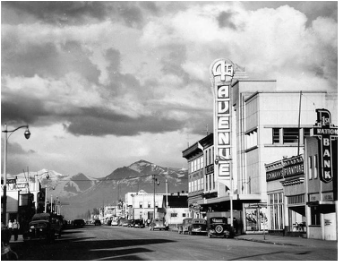
The town of Anchorage was nearby. But, according to Max Crandall who served in 111 Squadron as an armourer (in his book "Farm Boy Goes to War", page 29), "It didn't take long to get acquainted with the town of Anchorage... It had one long main street with a number of short side streets. Every second or third establishment was either a saloon or a night club such as the 'The South Seas' where alcoholic beverages were the stock in trade. The ladies of the night ran a thriving business and often queues of servicemen lined up down the street.... Lake Spenard was close by and some of us boys would manage to get out there for a swim."
T he photo of 1940's Anchorage streetscape C2005, Murray Lundberg, see this link.
T he photo of 1940's Anchorage streetscape C2005, Murray Lundberg, see this link.
The Ground Crew
The pilots seemed to get all of the press and prestige, understandably, since they took the greatest risks. But the risks would have been incalculably greater if their planes were not in tip-top shape. The guys on the ground had to be out there in any weather (and in the Aleutians the weather was as bad as it gets), prepared for any job. These pictures highlight just how complicated the task could be.
Here is crew arranging for as much comfort as can be expected at the wind-exposed base at Fort Glenn, Umnak Island. I think this is a 14 Squadron ground crew although it might 111 Squadron. I haven't been able to identify the men as yet. Help. The canvas covered "shed" could accommodate the nose only but it did protect crew from the freezing and capricious winds and driving rains.
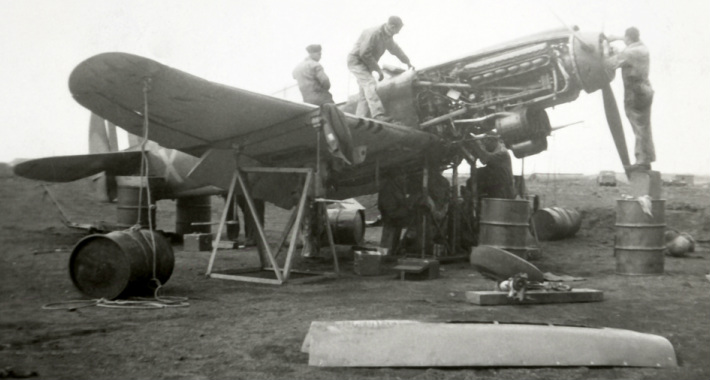
Photo by Department of National Defence PMR 80-257, courtesy of Captain Fred Paradie
Taking advantage of a nice day, the Ground Crew are swarming (there are six men working here) over P-40E (AL 214, RCAF # 1091, Sqn ID "X"). I think this picture was taken at Fort Greely, Kodiak Island, Alaska. I have no record that "X" was damaged while in 111 Squadron's care so this must have been a general overhaul. They have removed the landing gear and are holding the a/c up with tent-like supports. Don Forbes, son of Johnnie Forbes (an Air Frame Mechanic in 111 Squadron) tells me these tent-like structures were called "trestles". Like it's from the horse's mouth, thanks, Don. Note that they are also holding it down with water-filled fuel drums. The winds could be ferocious and they were taking no chances. Note: the white box on the underside of the wing is the gun camera; note, also, the precariousness of the position of the man working on the nose. His son, Russ, thinks that this is his Father, Bill Weeks.
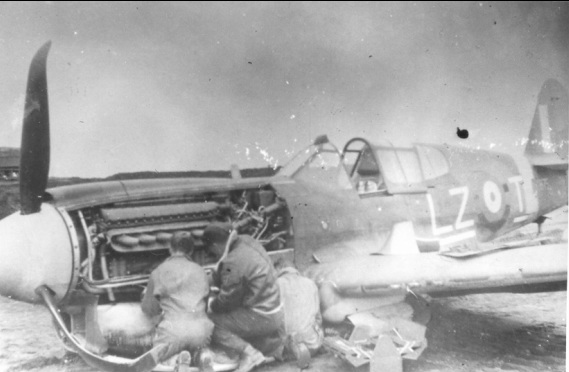 This is a Department of National Defence photograph but I do not have its identification number.
This is a Department of National Defence photograph but I do not have its identification number.
Here is a 111 Squadron Kittyhawk that had a hard landing, probably because the landing gear was not locked properly. That was a common problem with the early
P-40 models and with relatively inexperienced fliers. The crash had to have occurred before October 18, 1942 when all RCAF squadrons were ordered to remove squadron identification letters, presumably for security reasons. LZ were the identification letters for 111 Squadron.
Close examination of the numbers under the tailplane suggests that the final two numbers could have been 75. If so, this aircraft could have been AK 875 (RCAF #1047) which had been with 111 Squadron since its earliest days back in Rockcliffe (November, 1941).
On November 22, 1941, Pilot Officer Ingalls, after soloing in a P-40 (this P-40), in his second flight of the day, involved this a/c in a Category C accident. That might have been the mess the ground crew were working on in this picture. Since the AK 875 numbers have not yet been painted over with a rectangle of black paint, I would guess that this work was being done in the summer of 1942. They were probably at Elmendorf. It looks like there was some effort to paint out the yellow ring on the roundel, as well.
However, there was another incident involving AK 875. On July 13, 1942, the squadron flew their aircraft to Alaska. On the way, then-Pilot Officer Lynch, while approaching Naknak, had some kind of difficulty which resulted in a crash landing. His granddaughter, Karen Abel, informed me that he had recorded in his log book that, on that day (July 13, 1942), he was flying AK 875, squadron ID "T". So it is not clear which incident resulted in the damage recorded in the above photograph. It does, though, lead us into the "Mystery of BITSA".
P-40 models and with relatively inexperienced fliers. The crash had to have occurred before October 18, 1942 when all RCAF squadrons were ordered to remove squadron identification letters, presumably for security reasons. LZ were the identification letters for 111 Squadron.
Close examination of the numbers under the tailplane suggests that the final two numbers could have been 75. If so, this aircraft could have been AK 875 (RCAF #1047) which had been with 111 Squadron since its earliest days back in Rockcliffe (November, 1941).
On November 22, 1941, Pilot Officer Ingalls, after soloing in a P-40 (this P-40), in his second flight of the day, involved this a/c in a Category C accident. That might have been the mess the ground crew were working on in this picture. Since the AK 875 numbers have not yet been painted over with a rectangle of black paint, I would guess that this work was being done in the summer of 1942. They were probably at Elmendorf. It looks like there was some effort to paint out the yellow ring on the roundel, as well.
However, there was another incident involving AK 875. On July 13, 1942, the squadron flew their aircraft to Alaska. On the way, then-Pilot Officer Lynch, while approaching Naknak, had some kind of difficulty which resulted in a crash landing. His granddaughter, Karen Abel, informed me that he had recorded in his log book that, on that day (July 13, 1942), he was flying AK 875, squadron ID "T". So it is not clear which incident resulted in the damage recorded in the above photograph. It does, though, lead us into the "Mystery of BITSA".
The BITSA Stor(ies)
Here is a picture of BITSA. It looks as good as new, thanks to the efforts of Squadron 111's fitters and riggers.
But there is a bit of a mystery to the BITSA story. There is no doubt that BITSA was a 111 Squadron aircraft. But we have two post-war recollections by members of 111 Squadron of how BITSA came to be. And the stories are quite different.
I am very grateful to Don Forbes, son of Corporal Johnnie Forbes (Air Frame Mechanic with 111 Squadron), who sent his father's version of the birth of BITSA. He quoted his father: "The pilot was on his final approach. He came in too hot. He had a choice, hit a concrete abutment at the end of the runway or take to the drink. He chose the drink. A bunch of us got a truck and fished him out. We straightened her out and cleaned her up. One of the fellows got some paint and brush and painted 'BITSA' under the canopy. 'Bitsa' - built in time to save Alaska. We all laughed like hell at that."
The second recollection is substantively different. Here is Corporal (Armourer, Guns) Max Crandall's version: "As we weren't all that busy during the cold winter months (of 1943) it was arranged for a small crew to go back to the Alaskan mainland, and between Anchorage and Nak Nek (sic) they were able to pick up the pieces of that first plane that went down on our trip to Umnak about six months earlier. It was quite badly damaged but the pieces were brought back and the aircraft was rebuilt at our station in Fort Greely. It carried the identification letter "T" and when it was brought back into service, we added the letters 'BITSA' meaning now that it was a little bit of everything - not too much of the original aircraft." (Crandall, Max, A Farm Boy Goes to War, 1984, page 41)
Don Forbes cannot recall if his Father ever identified the aircraft or pilot. But the only 111 aircraft that I know of that went into the drink was P-40 (AL 194, squadron Identification letter "V"). Here is the statement in the squadron Daily Diary concerning this incident: "Fort Greely, Kodiak, Alaska, April 19, 1943 At 1420 hours, W.O.2 McLeod, S.R.J., had a "C" category crash with Kittyhawk E, AL 194. He crashed off the end of the runway into the ocean. The pilot was not injured."
(P-40E, AL 194, RCAF # 1087, wore the letter "V"). See picture below.
Corporal Crandall referred to "that first plane that went down" on the way to Umnak. In fact, there were two damaged aircraft in the approaches to Naknak that day. Here is the Daily Diary account: July 7, 1942, "W/C McGregor and six pilots left Elmendorf enroute for Umnak and Cold Bay. On the way to Naknak F/Sgt Schwalm was forced to bail out due to failure of the entire electrical system. On arrival at Naknak P/O Lynch crashed on landing" Schwalm was uninjured and rescued. Lynch, too was not injured. Unfortunately, the Daily Diary (uncharacteristically) failed to identify the aircraft involved in either incident. In fact. the aircraft Schwalm was flying was P-40 E AK 989 (RCAF # 1069). The accident was rated Category "A" which would be pretty much a total write-off. I had not been able to determine which aircraft Lynch was flying. There is no record of a Squadron 111 aircraft being destroyed while landing at Naknak. However, P/O Lynch's granddaughter, Karen Abel, has contributed a vital piece of information. P/O Lynch recorded in his log book that it was AK 875 that he crash-landed in. AK 875 wore the Squadron ID letter "T".
I am assuming that the aircraft that Corporal Crandall was referring to was Lynch's AK 875. He indicated that they brought "pieces" back. And BITSA did wear the "T". According to P/O Lynch's log, he did fly AK 875 again, but not until April 24, 1943, only a few weeks after the time Corporal Crandall said the ground crew refitted the Naknak wreck.
Which account is the more accurate? Who knows? (that is not a rhetorical question)
An interesting sidebar to the AK 875 story: in 1988, the United States National Air and Space Museum added AK 875 to their collection. She can be seen hanging in the museum and tricked out in a USAAF Flying Tigers uniform, at this site. AK 875 never flew with the Flying Tigers in Burma.
But there is a bit of a mystery to the BITSA story. There is no doubt that BITSA was a 111 Squadron aircraft. But we have two post-war recollections by members of 111 Squadron of how BITSA came to be. And the stories are quite different.
I am very grateful to Don Forbes, son of Corporal Johnnie Forbes (Air Frame Mechanic with 111 Squadron), who sent his father's version of the birth of BITSA. He quoted his father: "The pilot was on his final approach. He came in too hot. He had a choice, hit a concrete abutment at the end of the runway or take to the drink. He chose the drink. A bunch of us got a truck and fished him out. We straightened her out and cleaned her up. One of the fellows got some paint and brush and painted 'BITSA' under the canopy. 'Bitsa' - built in time to save Alaska. We all laughed like hell at that."
The second recollection is substantively different. Here is Corporal (Armourer, Guns) Max Crandall's version: "As we weren't all that busy during the cold winter months (of 1943) it was arranged for a small crew to go back to the Alaskan mainland, and between Anchorage and Nak Nek (sic) they were able to pick up the pieces of that first plane that went down on our trip to Umnak about six months earlier. It was quite badly damaged but the pieces were brought back and the aircraft was rebuilt at our station in Fort Greely. It carried the identification letter "T" and when it was brought back into service, we added the letters 'BITSA' meaning now that it was a little bit of everything - not too much of the original aircraft." (Crandall, Max, A Farm Boy Goes to War, 1984, page 41)
Don Forbes cannot recall if his Father ever identified the aircraft or pilot. But the only 111 aircraft that I know of that went into the drink was P-40 (AL 194, squadron Identification letter "V"). Here is the statement in the squadron Daily Diary concerning this incident: "Fort Greely, Kodiak, Alaska, April 19, 1943 At 1420 hours, W.O.2 McLeod, S.R.J., had a "C" category crash with Kittyhawk E, AL 194. He crashed off the end of the runway into the ocean. The pilot was not injured."
(P-40E, AL 194, RCAF # 1087, wore the letter "V"). See picture below.
Corporal Crandall referred to "that first plane that went down" on the way to Umnak. In fact, there were two damaged aircraft in the approaches to Naknak that day. Here is the Daily Diary account: July 7, 1942, "W/C McGregor and six pilots left Elmendorf enroute for Umnak and Cold Bay. On the way to Naknak F/Sgt Schwalm was forced to bail out due to failure of the entire electrical system. On arrival at Naknak P/O Lynch crashed on landing" Schwalm was uninjured and rescued. Lynch, too was not injured. Unfortunately, the Daily Diary (uncharacteristically) failed to identify the aircraft involved in either incident. In fact. the aircraft Schwalm was flying was P-40 E AK 989 (RCAF # 1069). The accident was rated Category "A" which would be pretty much a total write-off. I had not been able to determine which aircraft Lynch was flying. There is no record of a Squadron 111 aircraft being destroyed while landing at Naknak. However, P/O Lynch's granddaughter, Karen Abel, has contributed a vital piece of information. P/O Lynch recorded in his log book that it was AK 875 that he crash-landed in. AK 875 wore the Squadron ID letter "T".
I am assuming that the aircraft that Corporal Crandall was referring to was Lynch's AK 875. He indicated that they brought "pieces" back. And BITSA did wear the "T". According to P/O Lynch's log, he did fly AK 875 again, but not until April 24, 1943, only a few weeks after the time Corporal Crandall said the ground crew refitted the Naknak wreck.
Which account is the more accurate? Who knows? (that is not a rhetorical question)
An interesting sidebar to the AK 875 story: in 1988, the United States National Air and Space Museum added AK 875 to their collection. She can be seen hanging in the museum and tricked out in a USAAF Flying Tigers uniform, at this site. AK 875 never flew with the Flying Tigers in Burma.
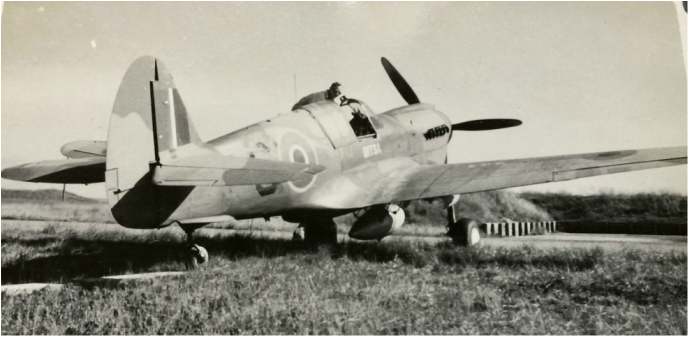
Here is BITSA again, this time wearing the squadron ID letter "S". I believe this is the same aircraft but in this photograph, its roundels and squadron ID letter are different. This type of fuselage roundel (O'Malley called it Type C1) was not used until early 1944.
In 1944, 133 Squadron was flying P-40s out of Sea Island and Patricia Bay. One of theirs was AK875. However, Walker reported that their squadron ID code was "D", not "S". Oh conundrum! Could there have been more than one BITSA?
In 1944, 133 Squadron was flying P-40s out of Sea Island and Patricia Bay. One of theirs was AK875. However, Walker reported that their squadron ID code was "D", not "S". Oh conundrum! Could there have been more than one BITSA?
W.O.2 McLeod's P-40E AL 194 (1087) being pulled out of the drink after he ran off the runway on April 19, 1943 at Fort Greely, Kodiak, Alaska. Note the Thunderbird crest on the nose. Photo: Department of National Defence #PMR 75-603
And we have another Rigger story from the inimitable AFM Sergeant, Johnny Forbes, as relayed through his son, Don. Don thinks, but he never asked John, that this event might have happened at Patricia Bay in the spring to early summer of 1942. In fact, 111 Squadron was already at Elmendorf Airbase in Anchorage, Alaska at that time. This story gives a great peek into the kinds of chores that kept Riggers busy. "One day, we had to pull the fuel tank out of the fuselage on one of the kitty's. There was three of us on the crew. We removed the canopy, then pulled the pilot's seat. The seat was adjustable, up or down, that was it ! Next, we got after the armor plate behind the seat. One of us reached back in the fuselage and disconnected the fuel lines, plugged them, and moved them out of the way. This tank held in the order of some sixty odd gallons of one hundred octane fuel. Leather straps were used to rest the tank on so it wouldn't chafe. We wrestled it out,and put it on the ground. I pushed it back and forth and rolled it around to get it back into shape. Good Lord ! what a chore that was ! After a while, we got it there ! Satisfied, we put everything back, and buttoned her up the way we found her... The pilot, as I recall, must not have switched tanks in time, and it collapsed. He did make it back OK though..."
Thanks, Don.
Thanks, Don.
The Ground Crew contained Armourers, as well as Fitters and Riggers. Here is a 111 Squadron Armourer (I think it's Max Crandall) beside some of the bombs they loaded onto the Kittyhawk.
Armourers specialized in either Bombs or Guns. Here are three 111 Squadron Armourers (Guns) at work. Cleaning the machine gun is Leading Aircraftman K. Kuykendall. Note the blast tube standing beside him (I am grateful to Dan Gory for correcting my error in thinking that this object is the gun barrel). Working on the machine gun are Leading Aircraftman Max Crandall (left) and Leading Aircraftman Ken Coutts. The aircraft is P40E AK 905 (1052) with the squadron ID letter "D". The AK 905 numbers (RAF designation) have been painted out with black paint just aft of the "D". I believed that they hadn't painted the RCAF designation (1052) on yet, but sharp-eyed Dan Gory noticed that one can see the number "1052" under the panel of black paint. I think this picture was made after the squadron left Elmendorf and was based on Kodiak Island, perhaps Spring, 1943. That coincides with the arrival of LAC Kuykendall who joined 111 Squadron at Fort Greely on May 20, 1943. Note the Thunderbird nose art. And note, too, the rolling scaffolding that allowed the Aero-Engine Mechanics to work "in comfort" on the engine.
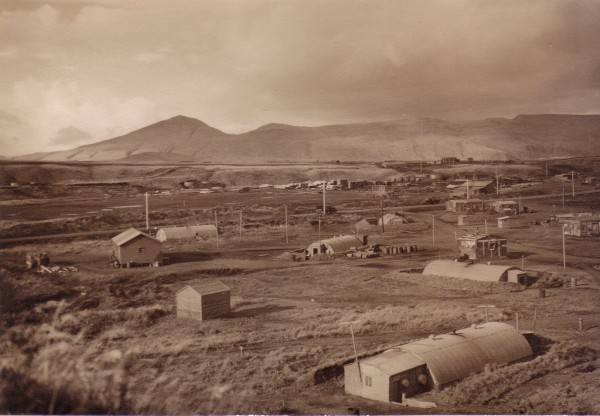 Fort Glenn Air Base, Umnak Island Photo from the Greg Krenzelok Photo Collection, courtesy of Greg Krenzelok. Thanks, Greg.
Fort Glenn Air Base, Umnak Island Photo from the Greg Krenzelok Photo Collection, courtesy of Greg Krenzelok. Thanks, Greg.
The Aleutian Islands are tiny spots in a very large ocean. Atmospheric conditions were almost always cloudy and foggy. The jutting, volcanic mountains were a constant danger to fliers struggling to see their way through mist and driving rain. The tragic crash of four 111 pilots and planes, on July 16, 1942, was into a similar mountain on neighbouring Unalaska Island. They were trying to find Umnak Island by flying as much below the clouds as they could. Suddenly, Unalaska's mountain was there. They couldn't climb fast enough and followed the leader into the side of the mountain.
The American base on Umnak Island was called Fort Glenn. They had their own airfield there. The RCAF units were installed at a satellite airfield ten miles away. The squadron Daily Diary persisted in calling it Satellite Field for the whole time 111 Squadron flew out of Umnak.
One half of the squadron was stationed on Umnak at Satellite Field while the other half was deployed to Amchitka for a month after which they rotated back and were replaced by the other half of the squadron. 111 Squadron had a presence on Umnak Island from July 13, 1942 until October 13, 1942. Flight Lieutenant (Pilot) Robert Lynch, Commander of "A" Flight of 111 Squadron while they were on Umnak, years later wrote this about their assignment: "Our training was accomplished in Anchorage mainly in learning USAF radio procedures. Our subsequent operational duties on Umnak consisted of aerodrome patrols, shared equally with the 11th Pursuit (USAAF) from dawn to dusk on a daily basis. Pilots are pilots, consequently we had no trouble blending into the routine of the 11th Pursuit's operational duties. We definitely retained our identity and our relations with the Americans could not have been better."
Every evening the pilots would meet for a discussion about the war situation in their sector. These meetings were led by 111's F/L Harry Thorne Mitchell, DFC who had had battle experience in Europe. He spoke about fighter tactics and did workshops with them, which the American pilots asked to attend. It was reported that all found the discussions helpful.
The real enemy was the weather. Fogs, winds, driving rains caused many hardships. A Canadian Press staff writer named Lorne Bruce was sent out to the Aleutians, particularly to Umnak Island, to get a first hand account of what conditions were like. In an article, that appeared in The Winnipeg Tribune on June 21, 1943, he gave this report: "Chief danger in the North Pacific theatre is the weather - the worst for flying in the world. Snow, rain and sleet storms come and go in minutes. Fogs roll down from the snow-covered volcanic mountains to blot out a landing strip in less than a quarter of an hour. Williwaws - strong winds that come straight down or in a verticle (sic) circle - make flying more dangerous.... PO Keeling Barrie, of Edmonton, reported seeing a fog following a plane so rapidly down a landing strip that visibility was zero in a matter of seconds after the plane was in the air. The field had been clear when the plane began its run to take off. Another time a pilot got out of his machine and walked a few yards to talk to the ground crew. When he turned around a few minutes later, the machine was upside down. The wind had picked up the plane, turned it over, and set it down almost noiselessly."
A Canadian Press staff writer named Alan Randal wrote a feature called Mess-Room Chatter that appeared in Canadian papers from time to time. He wanted Canadians to have a sense of what "our boys" were contributing to the war effort. On Friday, May 19, 1944, well after the guys of 111 Squadron had left Alaska and had gone to Europe, this appeared in the Moose Jaw Times Herald. Some time later, the Moose Jaw Times Herald Editor published the article again, with this attached note: "Editor – These ‘Mess-room Chatter’ articles were published regularly and were meant to provide a positive image of the boys overseas. Tragically, many of the boys died soon after the articles appeared. (thanks to Richard Dowson for finding this): "Canadians who have seen service in Alaska way, they’d rather fly over here... 'Somehow the feeling that the people down here are pulling for you makes a difference.” Flying Officer Clifford Hicks, Crediton, Ontario. “You know there’s more than one emergency field to land in if you can’t get home, but in Alaska if you missed the base you went into the drink.' These Alaska service men are under Wing Commander R.T.P. Davidson of Vancouver, a veteran fighter pilot. They include Flight Lieutenant Harold Gooding of Ottawa, Flight Lieutenant James Gohl of Winnipeg (Killed in Action, June 12, 1944), Flying Officers Albert Watkins of Aylesbury (and Moose Jaw) Saskatchewan, and Stanley Garside, Edmonton (Killed in Action, June 7, 1944 in France)." Notice that he re-published this fully a year and a half after 111 Squadron had left Alaska and, under new name, 440 Squadron, had been fighting in Europe. These men were still talking about the difficulties and dangers of flying in Alaska.
The American base on Umnak Island was called Fort Glenn. They had their own airfield there. The RCAF units were installed at a satellite airfield ten miles away. The squadron Daily Diary persisted in calling it Satellite Field for the whole time 111 Squadron flew out of Umnak.
One half of the squadron was stationed on Umnak at Satellite Field while the other half was deployed to Amchitka for a month after which they rotated back and were replaced by the other half of the squadron. 111 Squadron had a presence on Umnak Island from July 13, 1942 until October 13, 1942. Flight Lieutenant (Pilot) Robert Lynch, Commander of "A" Flight of 111 Squadron while they were on Umnak, years later wrote this about their assignment: "Our training was accomplished in Anchorage mainly in learning USAF radio procedures. Our subsequent operational duties on Umnak consisted of aerodrome patrols, shared equally with the 11th Pursuit (USAAF) from dawn to dusk on a daily basis. Pilots are pilots, consequently we had no trouble blending into the routine of the 11th Pursuit's operational duties. We definitely retained our identity and our relations with the Americans could not have been better."
Every evening the pilots would meet for a discussion about the war situation in their sector. These meetings were led by 111's F/L Harry Thorne Mitchell, DFC who had had battle experience in Europe. He spoke about fighter tactics and did workshops with them, which the American pilots asked to attend. It was reported that all found the discussions helpful.
The real enemy was the weather. Fogs, winds, driving rains caused many hardships. A Canadian Press staff writer named Lorne Bruce was sent out to the Aleutians, particularly to Umnak Island, to get a first hand account of what conditions were like. In an article, that appeared in The Winnipeg Tribune on June 21, 1943, he gave this report: "Chief danger in the North Pacific theatre is the weather - the worst for flying in the world. Snow, rain and sleet storms come and go in minutes. Fogs roll down from the snow-covered volcanic mountains to blot out a landing strip in less than a quarter of an hour. Williwaws - strong winds that come straight down or in a verticle (sic) circle - make flying more dangerous.... PO Keeling Barrie, of Edmonton, reported seeing a fog following a plane so rapidly down a landing strip that visibility was zero in a matter of seconds after the plane was in the air. The field had been clear when the plane began its run to take off. Another time a pilot got out of his machine and walked a few yards to talk to the ground crew. When he turned around a few minutes later, the machine was upside down. The wind had picked up the plane, turned it over, and set it down almost noiselessly."
A Canadian Press staff writer named Alan Randal wrote a feature called Mess-Room Chatter that appeared in Canadian papers from time to time. He wanted Canadians to have a sense of what "our boys" were contributing to the war effort. On Friday, May 19, 1944, well after the guys of 111 Squadron had left Alaska and had gone to Europe, this appeared in the Moose Jaw Times Herald. Some time later, the Moose Jaw Times Herald Editor published the article again, with this attached note: "Editor – These ‘Mess-room Chatter’ articles were published regularly and were meant to provide a positive image of the boys overseas. Tragically, many of the boys died soon after the articles appeared. (thanks to Richard Dowson for finding this): "Canadians who have seen service in Alaska way, they’d rather fly over here... 'Somehow the feeling that the people down here are pulling for you makes a difference.” Flying Officer Clifford Hicks, Crediton, Ontario. “You know there’s more than one emergency field to land in if you can’t get home, but in Alaska if you missed the base you went into the drink.' These Alaska service men are under Wing Commander R.T.P. Davidson of Vancouver, a veteran fighter pilot. They include Flight Lieutenant Harold Gooding of Ottawa, Flight Lieutenant James Gohl of Winnipeg (Killed in Action, June 12, 1944), Flying Officers Albert Watkins of Aylesbury (and Moose Jaw) Saskatchewan, and Stanley Garside, Edmonton (Killed in Action, June 7, 1944 in France)." Notice that he re-published this fully a year and a half after 111 Squadron had left Alaska and, under new name, 440 Squadron, had been fighting in Europe. These men were still talking about the difficulties and dangers of flying in Alaska.
The creator of this beautiful map, Skye Cooley, can be contacted at this address. http://gis4geomorphology.com/. It demonstrates just how tricky the currents were that stirred up and mixed the frigid waters of the Bering Sea with the relatively warmer southern currents. The result: williwaws, impenetrable cloud banks, swirling fogs and, for pilots, "blindness", distorted radio transmission and unreliable instrument readings.
Another of Nature's enemies was the mosquito. They were huge, omnipresent and voracious. A USAAF Pilot, as quoted by Brian Garfield in his 1995 book The Thousand Mile War, described the pest this way: "The flight characteristics of the Alaskan mosquito have been greatly exaggerated. It is not true that they are as large as vultures. It is not true that antiaircraft outfits fresh from the States have opened fire on them, thinking they were Japanese Zeros. Their tail assembly is entirely different." Scant comfort there...
Living conditions were pretty basic. The Canadian airmen lived in square army tents. Canvas army cots and sleeping bags. The schedules of the supply ships that brought food and mail from home were controlled mostly by weather conditions. The supply lines were extremely long so nothing ever arrived fresh. Since nothing edible grows on the island, their diet was based on dehydrated and/or canned foods. It took weeks for mail from home to arrive.
According to Max Crandall, "It's doubtful anyone at home knew we were in Alaska. Our outgoing mail was all censored and our incoming mail was always addressed to us at U.S. A.P.O. #948, an Army Post office number in Seattle, Wash.; Kodiak was A.P.O. #937 and so on. In Umnak we could expect to get mail about once a month or a little better." (Farm Boy Goes to War, page 35)
To give a sense of just how limited their amenities were, at least on two occasions, according to the squadron Daily Diary, pilots flew from Satellite Airfield over to the base at Fort Glenn (10 miles) just for a shower. Gooding and Orr did it on September 13, 1942 and Gohl and Lynch did it the following day. These were in the first days of their stay there.
They had to make do without basic equipment and supplies, as well. In fact, according to the Daily Diary, they had made repeated requests for clothing that would be suitable for the windy, cold conditions and nothing had been supplied. They had to rely on the American PX for jackets and footwear. The Canadian airmen were included in the distribution of packages by the American Red Cross. The packages included pajamas, socks, books, games and playing cards and were sent to each enlisted man. The Canadians were said to be "greatly" appreciative. The Daily Diarist was moved to record the first round of packages this way: "This is the first time in the history of a Squadron that a donation of any kind has been received. We take off our hats to the good ladies of the American Red Cross." They had two such rounds of packages, one on September 7, 1942 and the other exactly one month later. On October 7, 1942, the Daily Diarist noted that they had created a new library for squadron use.
Apparently, the Canadians were inventive and made their own furniture from packing cases and their own plumbing systems with hot running water based on fuel drums and galvanized tin. The tents, of course, took a beating from the winds and storms that raged over Umnak. Max Crandall, an armourer with the squadron, remembers the role he played in making life better for them. "After one bad storm, I procured a shovel from somewhere and decided to dig myself a hole; no one else was interested so I decided to go it alone and I began digging. When the others in my tent discovered how much progress I was making, they too chipped in to help and in a few days we were down to where the weather wouldn't bother us... The idea proved to be catching, for in a few weeks all the tents occupied by Canadians, were down in the ground. Even the officers dug their own tents down. Usually officers didn't do work like that... but this was Alaska, the land of fair play, and if they wanted a hole in the ground they had to dig it, and they did - you see, it wouldn't do for officers to have second-class accommodation. Now we had all the comforts of home and some even procured used packing crates and put in walls and floors of wood. It was the best billeting west of Dutch Harbour." (Farm Boy Goes to War, page 35)
There was an official squadron Daily Diarist (from late February, 1942, it was F/O Lynch; in July, 1942, F/O Farrell assumed the role) who kept a record of the events of the day. The record was brief, sometimes enthusiastic but more typically understated and terse. Here is a sample of the daily record for several days in July, 1942 shortly after a part of the squadron began operating out of Fort Glenn. The squadron had just experienced the tragic loss of five pilots and planes on July 16, the recoveries of four of the five bodies had occurred and they were trying to get reorganized. Here are the entries:
July 23, 1942 Pilots of our squadron fly Operational Patrols from Fort Glenn. Flying one hour patrols in American ships mixed in with pilots of the 11th Pursuit (USAAF). Patrols started 04:15 grounded at 13:00 hours due to bad weather. The late S/L Kerwin and Sgt Maxmen were accorded burial with full military honors this afternoon at Fort Glenn, Alaska. Today the schedule for our pilots was completed and we are now known as (F) Flight, which consists of four American P-40's, ten pilots and our ground crew. Our temporary C.O. is P/O Lynch in charge of (F) Flight. The remainder of our squadron including five P40's still remain at Anchorage.
July 24, 1942 Our own patrols started today. Last patrol landed at 17:45 hours. Due to visibility no patrols will fly until tomorrow. W/C McGregor left this afternoon for Elmendorf Field, Anchorage. P/O Lynch still in charge here at Umnak.
July 25, 1942 Patrolling all day. Alert one hour and patrol one hour. The 111th has five sections of two planes each. Appointed section leaders are (1) P/O Lynch; (2) P/O Gohl; (3) P/O Ingalls; (4) P/O Gooding; (5) F/O Paynter.
July 26, 1942 Colonel D.F. Zanuck, famous Motion Picture Executive arrived today with intention of shooting scenes for a picture. Pilots of our squadron and pilots of 11th Pursuit (USAAF) took part in personnel scenes and scrambles. Tomorrow scenes of 111th will be taken.
July 27, 1942 Patrols started early today as usual but conditions changed quickly. Within five minutes from a good ceiling of 900 feet, the runways were completely closed in. Due to good work of patrols and the pilots, no patrols were caught off guard. Movie scenes that were taken today were of the Alaska Unit. Ten of our chaps were included.
July 28, 1942 Heavy ground fog hindered flying. In the afternoon had a ceiling of 6 to 700 feet. A new runway has been completed parallel to steel mesh runway. Pilots made circuits to get the feel of the new runway. Dirt runway greatly favored, as the other is hard on aircraft and makes landing difficult. Living conditions are improving. Five men to a tent with sleeping bags and four blankets per man. Homemade furniture being made up by everyone in spare moments. Cooperation has been 100%."
There was little for them to do there when they were not on shift. They organized a volleyball league and played every evening they could, frequently three games per evening.
Max Crandall had something to say about the use of alcohol. "There was no liquor on the Island of Umnak so there was a tendency for airmen to consume just about anything that had alcohol in it, such as lemon extract, shoe polish and another popular one they called 'torpedo juice'. It was pure alcohol and I don't really know why it was available on the island; maybe the P.B.Y.'s used torpedoes. So it was decided that one time when a DC-3 was coming down from Fort Richardson, a sizable quantity of liquor was put on board. You know, most of our crews weren't much good for anything for several days - they weren't too bad as long as the liquor held out but the return to normal was a bad time. Tempers could get real short."
(Farm Boy Goes to War, page 35)
According to the Daily Diary, on the evening of August 12, 1942, the pilots of USAAF Squadron 11 (Kittyhawks) and Squadron 54 (P-38 Lockheed Lightnings) invited all pilots of "The Canadian Thunderbirds" to a "Pursuit Festival" which the Daily Diary described as "an outpost party with no facilities except tin cans as cups. The drinks were known as Torpedo Cocktails - torpedo alcohol, grapefruit juice, peach juice and water." The diary was mute as to their condition the following morning except to say (perhaps archly) that the visibility was obscured by low ceiling and that patrols started at 09:15.
Living conditions were pretty basic. The Canadian airmen lived in square army tents. Canvas army cots and sleeping bags. The schedules of the supply ships that brought food and mail from home were controlled mostly by weather conditions. The supply lines were extremely long so nothing ever arrived fresh. Since nothing edible grows on the island, their diet was based on dehydrated and/or canned foods. It took weeks for mail from home to arrive.
According to Max Crandall, "It's doubtful anyone at home knew we were in Alaska. Our outgoing mail was all censored and our incoming mail was always addressed to us at U.S. A.P.O. #948, an Army Post office number in Seattle, Wash.; Kodiak was A.P.O. #937 and so on. In Umnak we could expect to get mail about once a month or a little better." (Farm Boy Goes to War, page 35)
To give a sense of just how limited their amenities were, at least on two occasions, according to the squadron Daily Diary, pilots flew from Satellite Airfield over to the base at Fort Glenn (10 miles) just for a shower. Gooding and Orr did it on September 13, 1942 and Gohl and Lynch did it the following day. These were in the first days of their stay there.
They had to make do without basic equipment and supplies, as well. In fact, according to the Daily Diary, they had made repeated requests for clothing that would be suitable for the windy, cold conditions and nothing had been supplied. They had to rely on the American PX for jackets and footwear. The Canadian airmen were included in the distribution of packages by the American Red Cross. The packages included pajamas, socks, books, games and playing cards and were sent to each enlisted man. The Canadians were said to be "greatly" appreciative. The Daily Diarist was moved to record the first round of packages this way: "This is the first time in the history of a Squadron that a donation of any kind has been received. We take off our hats to the good ladies of the American Red Cross." They had two such rounds of packages, one on September 7, 1942 and the other exactly one month later. On October 7, 1942, the Daily Diarist noted that they had created a new library for squadron use.
Apparently, the Canadians were inventive and made their own furniture from packing cases and their own plumbing systems with hot running water based on fuel drums and galvanized tin. The tents, of course, took a beating from the winds and storms that raged over Umnak. Max Crandall, an armourer with the squadron, remembers the role he played in making life better for them. "After one bad storm, I procured a shovel from somewhere and decided to dig myself a hole; no one else was interested so I decided to go it alone and I began digging. When the others in my tent discovered how much progress I was making, they too chipped in to help and in a few days we were down to where the weather wouldn't bother us... The idea proved to be catching, for in a few weeks all the tents occupied by Canadians, were down in the ground. Even the officers dug their own tents down. Usually officers didn't do work like that... but this was Alaska, the land of fair play, and if they wanted a hole in the ground they had to dig it, and they did - you see, it wouldn't do for officers to have second-class accommodation. Now we had all the comforts of home and some even procured used packing crates and put in walls and floors of wood. It was the best billeting west of Dutch Harbour." (Farm Boy Goes to War, page 35)
There was an official squadron Daily Diarist (from late February, 1942, it was F/O Lynch; in July, 1942, F/O Farrell assumed the role) who kept a record of the events of the day. The record was brief, sometimes enthusiastic but more typically understated and terse. Here is a sample of the daily record for several days in July, 1942 shortly after a part of the squadron began operating out of Fort Glenn. The squadron had just experienced the tragic loss of five pilots and planes on July 16, the recoveries of four of the five bodies had occurred and they were trying to get reorganized. Here are the entries:
July 23, 1942 Pilots of our squadron fly Operational Patrols from Fort Glenn. Flying one hour patrols in American ships mixed in with pilots of the 11th Pursuit (USAAF). Patrols started 04:15 grounded at 13:00 hours due to bad weather. The late S/L Kerwin and Sgt Maxmen were accorded burial with full military honors this afternoon at Fort Glenn, Alaska. Today the schedule for our pilots was completed and we are now known as (F) Flight, which consists of four American P-40's, ten pilots and our ground crew. Our temporary C.O. is P/O Lynch in charge of (F) Flight. The remainder of our squadron including five P40's still remain at Anchorage.
July 24, 1942 Our own patrols started today. Last patrol landed at 17:45 hours. Due to visibility no patrols will fly until tomorrow. W/C McGregor left this afternoon for Elmendorf Field, Anchorage. P/O Lynch still in charge here at Umnak.
July 25, 1942 Patrolling all day. Alert one hour and patrol one hour. The 111th has five sections of two planes each. Appointed section leaders are (1) P/O Lynch; (2) P/O Gohl; (3) P/O Ingalls; (4) P/O Gooding; (5) F/O Paynter.
July 26, 1942 Colonel D.F. Zanuck, famous Motion Picture Executive arrived today with intention of shooting scenes for a picture. Pilots of our squadron and pilots of 11th Pursuit (USAAF) took part in personnel scenes and scrambles. Tomorrow scenes of 111th will be taken.
July 27, 1942 Patrols started early today as usual but conditions changed quickly. Within five minutes from a good ceiling of 900 feet, the runways were completely closed in. Due to good work of patrols and the pilots, no patrols were caught off guard. Movie scenes that were taken today were of the Alaska Unit. Ten of our chaps were included.
July 28, 1942 Heavy ground fog hindered flying. In the afternoon had a ceiling of 6 to 700 feet. A new runway has been completed parallel to steel mesh runway. Pilots made circuits to get the feel of the new runway. Dirt runway greatly favored, as the other is hard on aircraft and makes landing difficult. Living conditions are improving. Five men to a tent with sleeping bags and four blankets per man. Homemade furniture being made up by everyone in spare moments. Cooperation has been 100%."
There was little for them to do there when they were not on shift. They organized a volleyball league and played every evening they could, frequently three games per evening.
Max Crandall had something to say about the use of alcohol. "There was no liquor on the Island of Umnak so there was a tendency for airmen to consume just about anything that had alcohol in it, such as lemon extract, shoe polish and another popular one they called 'torpedo juice'. It was pure alcohol and I don't really know why it was available on the island; maybe the P.B.Y.'s used torpedoes. So it was decided that one time when a DC-3 was coming down from Fort Richardson, a sizable quantity of liquor was put on board. You know, most of our crews weren't much good for anything for several days - they weren't too bad as long as the liquor held out but the return to normal was a bad time. Tempers could get real short."
(Farm Boy Goes to War, page 35)
According to the Daily Diary, on the evening of August 12, 1942, the pilots of USAAF Squadron 11 (Kittyhawks) and Squadron 54 (P-38 Lockheed Lightnings) invited all pilots of "The Canadian Thunderbirds" to a "Pursuit Festival" which the Daily Diary described as "an outpost party with no facilities except tin cans as cups. The drinks were known as Torpedo Cocktails - torpedo alcohol, grapefruit juice, peach juice and water." The diary was mute as to their condition the following morning except to say (perhaps archly) that the visibility was obscured by low ceiling and that patrols started at 09:15.
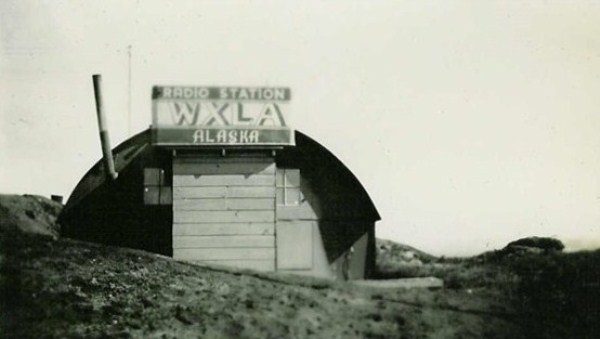 This photo from the G.L. Krenzelok Collection and posted at http://freepages.genealogy.rootsweb.ancestry.com/~gregkrenzelok Mr. Krenzelok wrote:
August 5, 2013 – I received this email from Stephen Briscuso:
Hello Greg
Thought you may like this photo of Radio Station WXLA that I believe my father, Sgt. Salvatore (Sam) Briscuso took when he was stationed on Umnak Island in 1943. My dad passed away in 1989.
Thanks.....Stephen Briscuso
This photo from the G.L. Krenzelok Collection and posted at http://freepages.genealogy.rootsweb.ancestry.com/~gregkrenzelok Mr. Krenzelok wrote:
August 5, 2013 – I received this email from Stephen Briscuso:
Hello Greg
Thought you may like this photo of Radio Station WXLA that I believe my father, Sgt. Salvatore (Sam) Briscuso took when he was stationed on Umnak Island in 1943. My dad passed away in 1989.
Thanks.....Stephen Briscuso
They did have radio. An Umnak Island radio station brought music and news. One of the broadcasters of the day was Jay Street. In an e-mail to rootsweb at ancestry.com, dated February 20, 2012, Jay Street wrote: "Viewed your pictures today and remember many of those sites, especially the radio station and the manager there was Ed Moser, sitting in front of the console. I worked with Ed and was a disc jockey/ announcer during 43 & 44 and part of 45. We used to put the island to bed with a nightcap signoff featuring the King Sisters singing 'Nighty Night Till Tomorrow' and Vonnie King, would get real close to the microphone and say those words. The radio stations call letters were WXLA on Umnak." It's as if we were there, Jay. Thanks for the memory.

Ground crew, at the Satellite Base on Umnak Island, had these nose sheds that gave a little protection from squalls and wind. There is a mix of 111 Squadron and 14 squadron P-40's here. The one in the foreground is 111's P-40 Mk I, AK905 (RCAF # 1052). Note the underlkined squadron ID letter. I think 111 Squadron was the only one among the Alaska squadrons that used the underline. Photo Department of National Defence PL 13210, courtesy of Captain Fred Paradie.
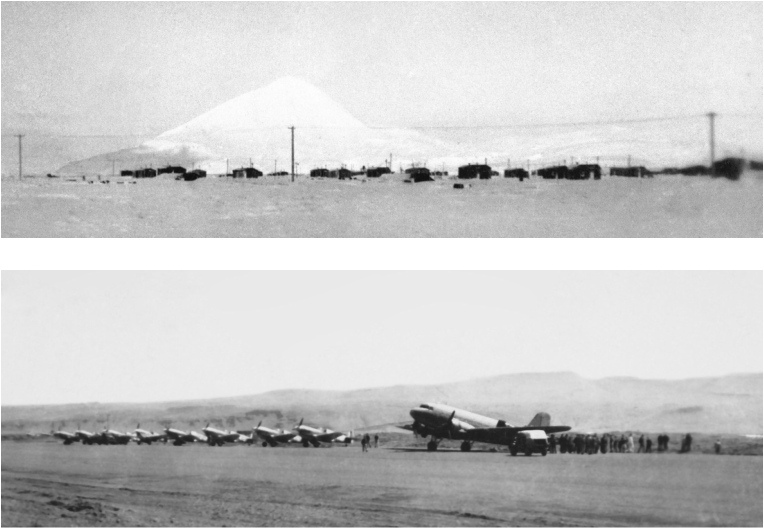
Satellite Field Airbase, Umnak Island. Mt Tulik is barely discernible in the background of the upper photo. It is not hard to imagine that the towering volcanic mountains along the Aleutian Chain were as hazardous to aircraft as they were beautiful. The bottom photo shows a detachment (either from 14 Squadron or 111 Squadron) arriving to begin their rotation on Umnak. The pilots flew their P-40s in and the spare pilots, ground crew and support staff came in on the C-47 which was, no doubt, piloted by USAAF's Captain Fillmore. (Both photos from Department of National Defence: The top one is PMR 79-622, the bottom photo is PMR 79-536; both courtesy of Captain Fred Paradie)
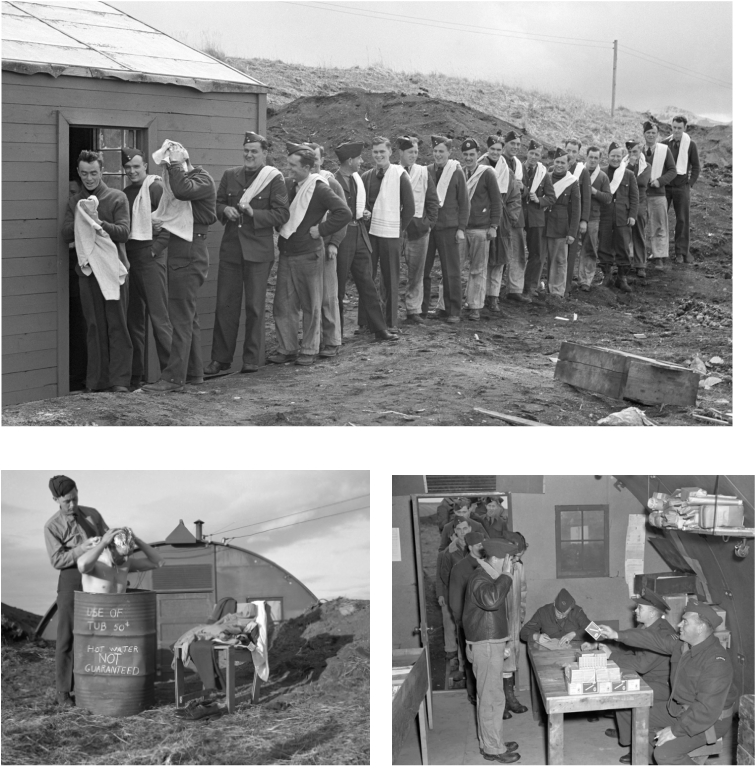
Conditions on the Aleutian Islands were very basic. Community shower facilities for the Enlisted Men were limited and in demand. The bathing pictures look posed, the top one probably on the occasion of the issuing of new, clean towels. The barrel picture looks jokey but they probably did bathe in barrels. Certainly, empty fuel barrels would have been readily available for such use. I don't know which squadron these men belonged to but all squadrons had the same conditions. The bottom right picture shows a typical line-up. Here for pay parade and the issuance of cigarette allotment. (Photo: All by the Department of National Defence, PL 13083, PL13082 and PL 13154 courtesy of Captain Fred Paradie.)
Fireplace Airfield, Adak Island, Aleutians
September 21,1942 - October 8,1942 and May 4 1943 - May 14, 1943
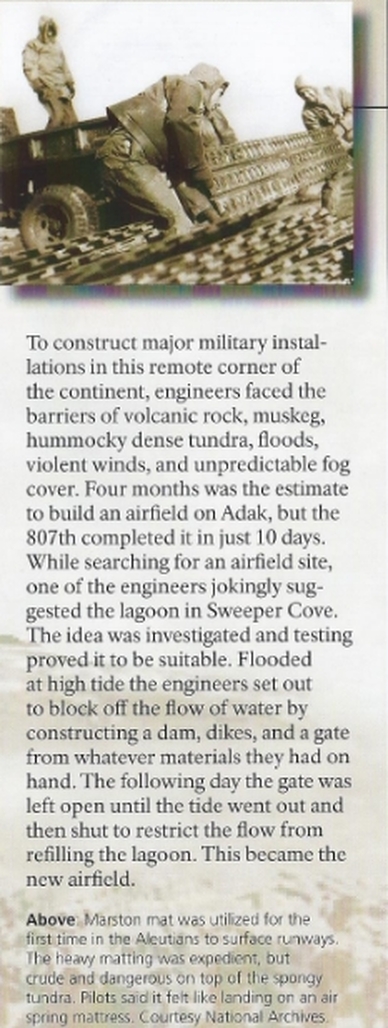 Photo and copy from War in the Aleutians 1942 - 1945, a 2009 Calendar featuring the Aleutian World War II National Historic Area. It was produced by the U.S. National Park Service. It appears here courtesy of Anne and Bo Jensen.
Photo and copy from War in the Aleutians 1942 - 1945, a 2009 Calendar featuring the Aleutian World War II National Historic Area. It was produced by the U.S. National Park Service. It appears here courtesy of Anne and Bo Jensen.
The distance between Umnak Island and Kiska Island (where the Japanese forces were dug in) was about 650 miles, too far for a loaded P-40 to attack and make it safely home. So an island in between them was chosen to be the site of an advanced base. Adak Island filled the bill. Flat land could be created (see insert) for runways and it was only 250 miles from Kiska, a manageable distance for the P-40s with belly tanks.
From late in 1942 until well into the Winter of 1943, the USAAF 11th Pursuit Squadron flew sorties from Umnak Island through Adak Island (where they refueled) to Kiska. Two RCAF Squadrons, 111 and 14, took two-week rotations living and flying from Adak. 111 Squadron took the first shift on Adak beginning on September 21, 1942 and lasting until October 8. One half of 111 Squadron remained on Umnak Island, the other on Adak. They returned to Adak again between May 4 and May 14, 1943. Their principal role was to patrol and provide security for the installation.
The weather did not improve, however. The guaranteed weather report for any day that September anticipated rain and wind. To get an idea of what it must have been like to fly out of Fireplace and return to it, look at this film clip. (Alaska Film Archives, University of Alaska, Fairbanks, John Huston narrating) I'm not sure which island airstrip is shown in the clip but, in the Aleutians, weather conditions could be counted on to be trying, no matter where you were. The clip shows Lockheed P-38 Lightnings and Bell P-39 Airacobras, not Kittyhawks, but you do see the difficulties they faced.
Yet, between them, the two Canadian squadrons managed to fly 60 sorties out of Adak. And they did it without mishap.
Their mission, at first, was primarily defensive but they chafed at having to play a defensive role. They wanted their turn at the enemy.
There was great elation when it was announced that members of both Canadian squadrons were to be included in a major raid against the enemy on Kiska.
In some respects, the raid on the Japanese-held Kiska Island represented the dramatic high point for 111 (f) Squadron.
Here is how the events unfolded as recorded in the squadron's Daily Diary:
(Note: throughout the record, there seems to have been little unanimity as to whether the field on Adak Island was called Fireplace or Fireside, somewhere I saw it referred to as Flashlight. I will use Fireplace.
September 16, 1942 Umnak Island
Squadron Leader Boomer flew over in the afternoon from the main field (Fort Glenn, Umnak Island) and from him we learned of an intended fighter sweep from Fireside (sic) to Kiska in which some of our pilots will take part.
September 18, 1942 Umnak Island
Three pilots were picked to accompany Squadron Leader Boomer on the strafing party to Kiska. They were Flying Officers Lynch and Gohl and Pilot Officer Gooding. The 11th Pursuit Squadron has to provide eight pilots in the charge of Major Chennault and the 18th (F) squadron to provide eight pilots under Major J.L. Goyle.
September 19, 1942 Umnak Island
The Kiska mission was called off on account of weather conditions.
September 20, 1942 Umnak Island
Pilots were due to take off at 13:30 hours for the Kiska mission but a terrific wind and rain storm came up and it was called off again.
September 21, 1942 Umnak Island
At 12:30 hours today, Squadron Leader Boomer, Flying Officers Gohl and Lynch and Pilot Officer Gooding took off with the American pilots for Fireplace enroute to Kiska. Prior to taking off the ship piloted by the Squadron Leader blew a tail tire and he had to change ships. Fast work by the ground crew did not delay the proceedings. Bon voyage as this is the first time the squadron has had a chance for real action against the Japs.
Our part in the raid will consist of strafing the naval emplacements primarily and a general ground strafe.
September 23, 1942 Umnak Island
No word as yet on the Kiska Mission. Everyone anxious to ascertain the results.
An addendum to the Diary called Appendix Three was the Squadron Leader's summary of the raid:
"September 25, 1942
Summary of Operational Mission on Kiska Squadron Leader K.A. Boomer, Flying Officers R. Lynch, J. G. Gohl, and Pilot Officer H.O. Gooding departed from Fort Glenn at 1330 hours, 22-9-42 to refuel at Fireplace, then to strafe Kiska. The mission consisted of 9 B-24's, 12 P-39's and 20 P-40's. The aircraft landed at Fireplace at 1600 hours, 22-9-42, refueling by all crews was carried out, and the following morning at 0900 hours the aircraft took off to complete the mission. Heavy rainstorms and poor visibility was encountered for approximately one hour's flying, and the aircraft were forced to turn back, weather necessitating the aircraft ascending to 17,000 feet on the return trip. One American aircraft was lost, supposedly due to weather, and the planes landed at 11:45 hours. Continued bad weather prevented the operation from being carried out until the morning of the 25th. At 0800 hours, 25-9-42 the aircraft again took off, and the weather was good throughout the trip. We arrived at Kiska harbour at approximately 10:00 hours. The Canadian Flight crossed Little Kiska Island, experiencing little fire from that point. Crossing the north head of the Harbour they heavily attacked naval gun emplacements and also several 50 calibre guns, continuing they attacked the main camp area and Squadron Leader Boomer with Pilot Officer Gooding also attacked enemy Radar Stations. Turning right the formation re-crossed the north head again attacking gun emplacements. Inside the Harbour area one enemy zero fighter float plane was encountered and destroyed by Squadron Leader Boomer. After circling the harbour, an enemy submarine was discovered also being attacked by American pilots. Canadians joined in this and made several attacks each. The formation then joined the B-24's, five miles east of Segula Island and returned to the base at Fireside (sic), landing at 11:50 hours.
The Canadian Pilots expended their full load of ammunition and returned safely with no damage to the aircraft. The time of the trip was 3 hours and 50 minutes."
From late in 1942 until well into the Winter of 1943, the USAAF 11th Pursuit Squadron flew sorties from Umnak Island through Adak Island (where they refueled) to Kiska. Two RCAF Squadrons, 111 and 14, took two-week rotations living and flying from Adak. 111 Squadron took the first shift on Adak beginning on September 21, 1942 and lasting until October 8. One half of 111 Squadron remained on Umnak Island, the other on Adak. They returned to Adak again between May 4 and May 14, 1943. Their principal role was to patrol and provide security for the installation.
The weather did not improve, however. The guaranteed weather report for any day that September anticipated rain and wind. To get an idea of what it must have been like to fly out of Fireplace and return to it, look at this film clip. (Alaska Film Archives, University of Alaska, Fairbanks, John Huston narrating) I'm not sure which island airstrip is shown in the clip but, in the Aleutians, weather conditions could be counted on to be trying, no matter where you were. The clip shows Lockheed P-38 Lightnings and Bell P-39 Airacobras, not Kittyhawks, but you do see the difficulties they faced.
Yet, between them, the two Canadian squadrons managed to fly 60 sorties out of Adak. And they did it without mishap.
Their mission, at first, was primarily defensive but they chafed at having to play a defensive role. They wanted their turn at the enemy.
There was great elation when it was announced that members of both Canadian squadrons were to be included in a major raid against the enemy on Kiska.
In some respects, the raid on the Japanese-held Kiska Island represented the dramatic high point for 111 (f) Squadron.
Here is how the events unfolded as recorded in the squadron's Daily Diary:
(Note: throughout the record, there seems to have been little unanimity as to whether the field on Adak Island was called Fireplace or Fireside, somewhere I saw it referred to as Flashlight. I will use Fireplace.
September 16, 1942 Umnak Island
Squadron Leader Boomer flew over in the afternoon from the main field (Fort Glenn, Umnak Island) and from him we learned of an intended fighter sweep from Fireside (sic) to Kiska in which some of our pilots will take part.
September 18, 1942 Umnak Island
Three pilots were picked to accompany Squadron Leader Boomer on the strafing party to Kiska. They were Flying Officers Lynch and Gohl and Pilot Officer Gooding. The 11th Pursuit Squadron has to provide eight pilots in the charge of Major Chennault and the 18th (F) squadron to provide eight pilots under Major J.L. Goyle.
September 19, 1942 Umnak Island
The Kiska mission was called off on account of weather conditions.
September 20, 1942 Umnak Island
Pilots were due to take off at 13:30 hours for the Kiska mission but a terrific wind and rain storm came up and it was called off again.
September 21, 1942 Umnak Island
At 12:30 hours today, Squadron Leader Boomer, Flying Officers Gohl and Lynch and Pilot Officer Gooding took off with the American pilots for Fireplace enroute to Kiska. Prior to taking off the ship piloted by the Squadron Leader blew a tail tire and he had to change ships. Fast work by the ground crew did not delay the proceedings. Bon voyage as this is the first time the squadron has had a chance for real action against the Japs.
Our part in the raid will consist of strafing the naval emplacements primarily and a general ground strafe.
September 23, 1942 Umnak Island
No word as yet on the Kiska Mission. Everyone anxious to ascertain the results.
An addendum to the Diary called Appendix Three was the Squadron Leader's summary of the raid:
"September 25, 1942
Summary of Operational Mission on Kiska Squadron Leader K.A. Boomer, Flying Officers R. Lynch, J. G. Gohl, and Pilot Officer H.O. Gooding departed from Fort Glenn at 1330 hours, 22-9-42 to refuel at Fireplace, then to strafe Kiska. The mission consisted of 9 B-24's, 12 P-39's and 20 P-40's. The aircraft landed at Fireplace at 1600 hours, 22-9-42, refueling by all crews was carried out, and the following morning at 0900 hours the aircraft took off to complete the mission. Heavy rainstorms and poor visibility was encountered for approximately one hour's flying, and the aircraft were forced to turn back, weather necessitating the aircraft ascending to 17,000 feet on the return trip. One American aircraft was lost, supposedly due to weather, and the planes landed at 11:45 hours. Continued bad weather prevented the operation from being carried out until the morning of the 25th. At 0800 hours, 25-9-42 the aircraft again took off, and the weather was good throughout the trip. We arrived at Kiska harbour at approximately 10:00 hours. The Canadian Flight crossed Little Kiska Island, experiencing little fire from that point. Crossing the north head of the Harbour they heavily attacked naval gun emplacements and also several 50 calibre guns, continuing they attacked the main camp area and Squadron Leader Boomer with Pilot Officer Gooding also attacked enemy Radar Stations. Turning right the formation re-crossed the north head again attacking gun emplacements. Inside the Harbour area one enemy zero fighter float plane was encountered and destroyed by Squadron Leader Boomer. After circling the harbour, an enemy submarine was discovered also being attacked by American pilots. Canadians joined in this and made several attacks each. The formation then joined the B-24's, five miles east of Segula Island and returned to the base at Fireside (sic), landing at 11:50 hours.
The Canadian Pilots expended their full load of ammunition and returned safely with no damage to the aircraft. The time of the trip was 3 hours and 50 minutes."
Fliers, like most soldiers everywhere, found ways to cope with the danger, fear and confusion that are inevitable in wartime conditions. Humour is an age-old tool for coping. Here is an example of the kind of joke that went around the U.S. pilots who flew out of Adak: the story involves a P-40 Pilot who arrived over fog-shrouded Adak, low on fuel. He called Adak Tower and asked for instructions. The tower's reply: "Repeat after me. Our Father Who art in Heaven..." (Story told by Ray C. Galloway, USAAF veteran of the Aleutian campaign, and reported in the National Park Service 2009 Calendar entitled War in the Aleutians 1942 - 1945 )
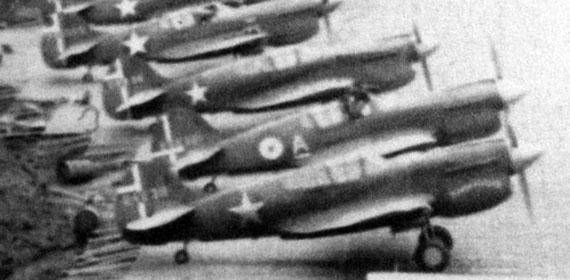
(These two P-40 K photos (above and below) extracted from www.aleutianplanes.com with thanks. This site was created by a specialist modeller who takes great pains to be historically accurate. It is worth a look since he has done treatments of other Aleutian Campaign planes, as well. I wish I could contact him because I have some details he might like to add to his site.) According to this site: http://www.airfields-freeman.com/AK/Airfields_AK.htm this photo shows 111 Squadron's P-40 K at the airfield on Amchitka Island. In fact it was P-40 K (#42-45951). It was in the summer/ fall of 1942.
The two photographs above show how the RCAF and USAAF (Eleventh Pursuit Squadron, 343rd Fighter Group) worked very closely in preparation for raids on Kiska Island. The top picture shows one of the P-40 K1s lent to 111 Squadron by the USAAF. It is #42-45951, alongside USAAF P-40s on Amchitka Island, warming up for a raid on Kiska. Earlier, on September 1, 1942 (almost immediately after it was received), this P-40 suffered a minor mishap when then-Pilot Officer Ingalls scraped the wing of a 111 Squadron P-40 E (AK 610). Damage was minor and repaired quickly. The accident was probably a result of having to work in the very tight quarters apparent in this photo.
The second photograph shows another of the borrowed (purchased?) P-40 K1s. This one was #42-45945. It was picked up by 111 Squadron at Elmendorf Air Base on September 3, 1942. It was given the ID letter "F" which had been available in the squadron since S/L Kerwin's death on July 16, 1942. He crashed into a mountain on Unalaska Island while flying the former "F" which was P-40 Mark 1, AK 954 (RCAF # 1061). 111 Squadron took this P-40 K to Umnak Island. Then-Pilot Officer Delbert English tested it for airworthiness there. This photo shows "F" on Adak Island, waiting for the next raid on Kiska. It is shown beside a USAAF B-25 Mitchell bomber that also went on the Kiska raids.
Both photos show aircraft all bunched together (space was at a premium on those advanced airfields) and demonstrate how unconcerned the Allies were about a threat from the air. The Japanese Air force had been pretty much neutralized at this point in the campaign. Nevertheless, both USAAF and RCAF participated in maintaining a constant protective umbrella over Adak Island.
When 111 Squadron was finished its tour in Alaska, they turned both of these aircraft over to 14 Squadron which also used them in raids against Kiska.
The second photograph shows another of the borrowed (purchased?) P-40 K1s. This one was #42-45945. It was picked up by 111 Squadron at Elmendorf Air Base on September 3, 1942. It was given the ID letter "F" which had been available in the squadron since S/L Kerwin's death on July 16, 1942. He crashed into a mountain on Unalaska Island while flying the former "F" which was P-40 Mark 1, AK 954 (RCAF # 1061). 111 Squadron took this P-40 K to Umnak Island. Then-Pilot Officer Delbert English tested it for airworthiness there. This photo shows "F" on Adak Island, waiting for the next raid on Kiska. It is shown beside a USAAF B-25 Mitchell bomber that also went on the Kiska raids.
Both photos show aircraft all bunched together (space was at a premium on those advanced airfields) and demonstrate how unconcerned the Allies were about a threat from the air. The Japanese Air force had been pretty much neutralized at this point in the campaign. Nevertheless, both USAAF and RCAF participated in maintaining a constant protective umbrella over Adak Island.
When 111 Squadron was finished its tour in Alaska, they turned both of these aircraft over to 14 Squadron which also used them in raids against Kiska.
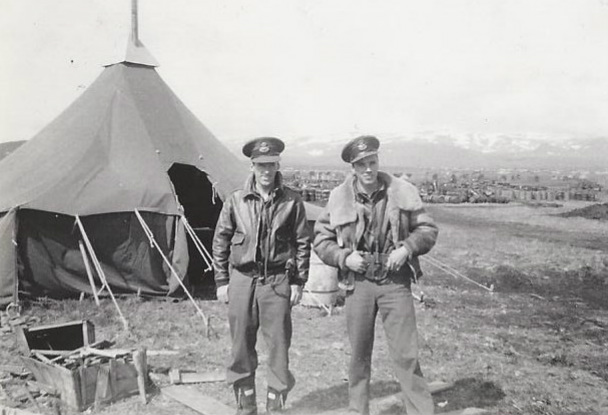
Flying Officers Rob Lynch and Jim Gohl at Fireplace. Note the fields of fuel drums assembled behind them. This candid snap was taken between September 22 and 25, 1942 when 111 Squadron's first raid against Kiska. happened. (Photographer unknown, perhaps Pilot Officer Hal Gooding. The photo came from the Collection of S/L Dave Ramsay, courtesy of his daughter and son-in-law Chrstie Anne and Bo Jenson)
Fort Richardson Air Force Base, Amchitka Island, Aleutians
(May 15, 43 - July 9, 1943)
In 1942, realizing that the Japanese forces would have to be driven away, US military commanders ordered that an airbase (code named Affectation) be constructed on Amchitka. From Amchitka to Kiska was a very short hop. USAAF and RCAF aircraft would be able to linger over the target, strafing and bombing without the worry of running out of fuel.
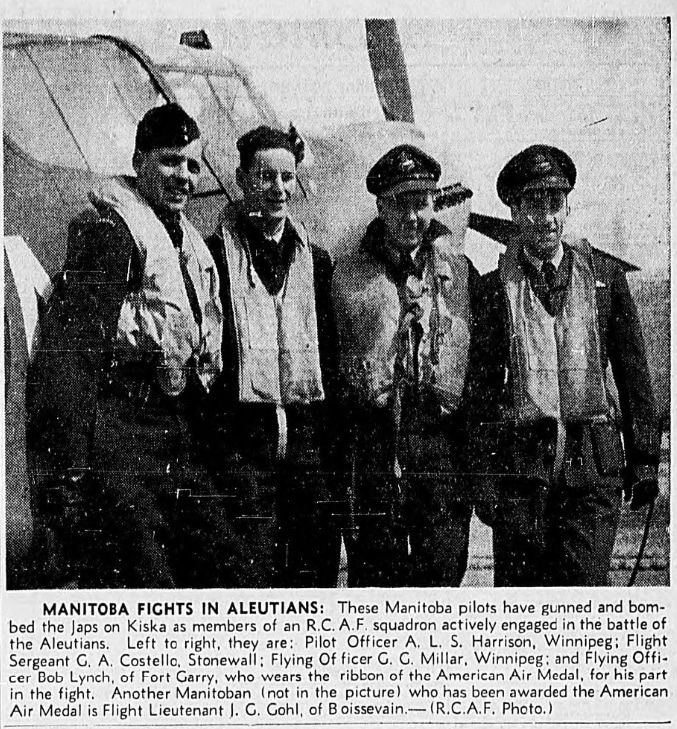 This photograph, by the Department of National Defence was circulated widely in Manitoba and across Canada. It is here courtesy of Gary Boudreau
This photograph, by the Department of National Defence was circulated widely in Manitoba and across Canada. It is here courtesy of Gary Boudreau
However, there were no natural building materials on the island, the weather was extremely uncooperative and, when the weather did improve a little, the Japanese bombed them. Nevertheless, the surface of boggy tundra was covered with steel grates (Marston Mats) and a usable runway was ready in a month after landing. From February, 1943, USAAF and RCAF warplanes were 50 miles away from the main Japanese stronghold on Kiska Island. Whenever weather permitted, there were bombing and strafing runs on Kiska. By August, the Japanese had slipped away for good.
111 Squadron had planes and crews on the island during this period on a two-week rotation basis, starting on May 15, 1943. They alternated with 14 Squadron. This part of 111 Squadron's assignment was completed on July 9, 1943. Living conditions were squalid but 111 personnel, according to their Squadron Daily Diary, appreciated being in the action.
Years later, Flight Lieutenant Robert Lynch, in a written interview with an officer/researcher from the Canadian Department of National Defence, recalled the missions over Kiska this way:
"The operations ... on Kiska were basically an escort duty until the target was reached. One squadron of heavy bombers,
B-24's, escorted by three squadrons of fighters mainly P-40's and P-39's. (12 bombers and 36 fighters). In addition, one B-17 covered by one high escort and one low escort (P-40's) was assigned to photograph the results of each raid. Once the target was reached, fighter sections (2 a/c) each of which had its own target, such as antiaircraft gun positions on the ground or on ships in the harbour, went in at low levels to eliminate any fire for the minute or so which the bombers would take to release their loads on their particular targets, motor pools, ammunition dumps, ships, barrachs (sic) etc. The fighters were then on their own to do whatever damage they could to anything that moved. Japanese aircraft were practically non existent as were the single float Zero type."
(This quote came from the collection of Flt. Lt. Robert Lynch, courtesy of his granddaughter, Karen Abel. Incidentally, check out Karen's blog in which she explores the experiences of servicemen who served in the Aleutian Campaign. www.floridabeachestotheberingsea.com)
The air raids on Kiska were more successful than they knew. While the allied forces worked on a plan to invade Kiska Island (an operation they felt was necessary although they feared that it would be terribly costly), the Japanese forces simply disappeared in the fog. By the time the weather cleared enough to allow another softening-up air raid, there was no sign of any Japanese presence on the island. In fact, the RCAF had participated in the last air raid on Kiska.
On August 13, 1943, the ground invasion of Kiska began but the invaders found the island to be abandoned.
111 Squadron had planes and crews on the island during this period on a two-week rotation basis, starting on May 15, 1943. They alternated with 14 Squadron. This part of 111 Squadron's assignment was completed on July 9, 1943. Living conditions were squalid but 111 personnel, according to their Squadron Daily Diary, appreciated being in the action.
Years later, Flight Lieutenant Robert Lynch, in a written interview with an officer/researcher from the Canadian Department of National Defence, recalled the missions over Kiska this way:
"The operations ... on Kiska were basically an escort duty until the target was reached. One squadron of heavy bombers,
B-24's, escorted by three squadrons of fighters mainly P-40's and P-39's. (12 bombers and 36 fighters). In addition, one B-17 covered by one high escort and one low escort (P-40's) was assigned to photograph the results of each raid. Once the target was reached, fighter sections (2 a/c) each of which had its own target, such as antiaircraft gun positions on the ground or on ships in the harbour, went in at low levels to eliminate any fire for the minute or so which the bombers would take to release their loads on their particular targets, motor pools, ammunition dumps, ships, barrachs (sic) etc. The fighters were then on their own to do whatever damage they could to anything that moved. Japanese aircraft were practically non existent as were the single float Zero type."
(This quote came from the collection of Flt. Lt. Robert Lynch, courtesy of his granddaughter, Karen Abel. Incidentally, check out Karen's blog in which she explores the experiences of servicemen who served in the Aleutian Campaign. www.floridabeachestotheberingsea.com)
The air raids on Kiska were more successful than they knew. While the allied forces worked on a plan to invade Kiska Island (an operation they felt was necessary although they feared that it would be terribly costly), the Japanese forces simply disappeared in the fog. By the time the weather cleared enough to allow another softening-up air raid, there was no sign of any Japanese presence on the island. In fact, the RCAF had participated in the last air raid on Kiska.
On August 13, 1943, the ground invasion of Kiska began but the invaders found the island to be abandoned.
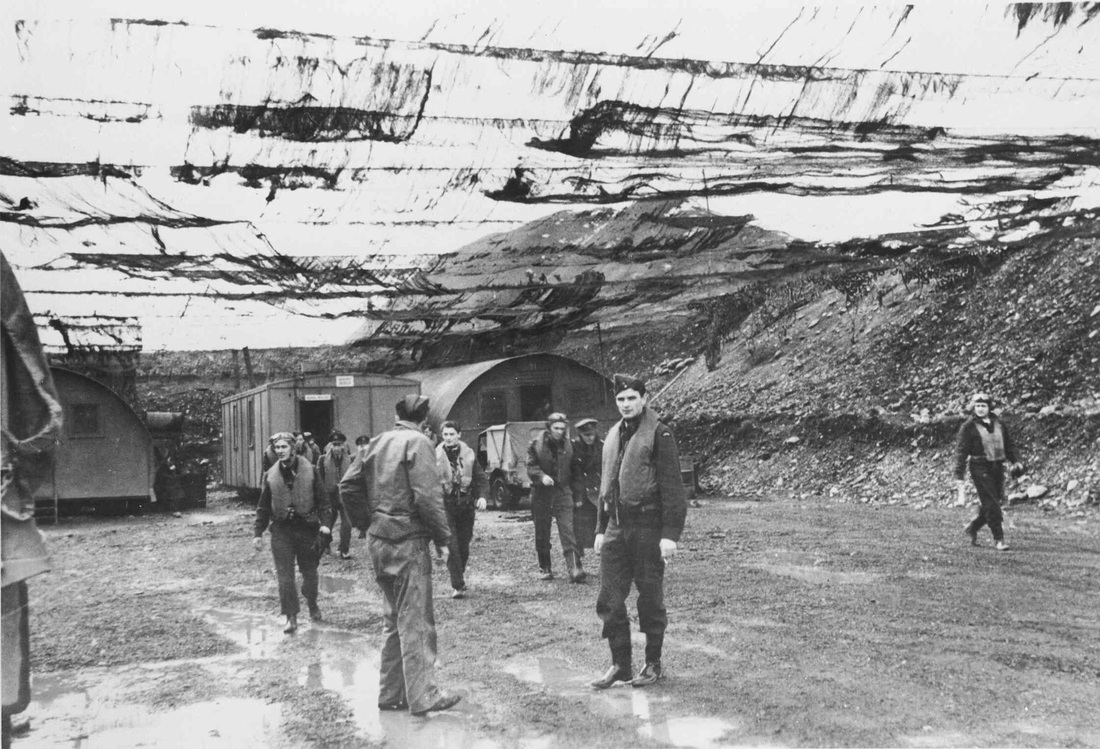
111 Squadron pilots coming out of briefing before mission. They are on Amchitka Island, 1943. Note the camouflage netting and the height of the revetment walls. That is (two relatives have said so) Nick Stusiak at the front. That might be Mike Merkley on the left (Photo credit: Department of National Defence, I don't know the number. I have it courtesy of Captain Fred Paradie).
These are the 111 Squadron pilots who took part in the patrols and attacks from Amchitka and Adak Islands. Joining them are the 14 Squadron pilots who replaced them at Amchitka. They are posing in front of a P-40 K-1-CU. Identifying them all has been fun work (with the help of Joe from www.flyingforyourlife.com where some of these men have feature pages). The picture was probably taken at Amchitka Island. Alaska. According Christie Anne (daughter of Dave Ramsay) and her husband, Bo Jensen, Ramsay's copy of this picture was dated on the back: July 7,1943. The squadron departed Amchitka two days later.
They are: L-R: 1. Hal Gooding 111, 2. Ed Merkley 111, 3. Jim Gohl 111, 4. Billy Pigden 111, 5. A.E. Clarke 14, 6. Frank Skelly 111, 7. Dave Ramsay 111, 8. Hugh Morse 14, 9. Bob Morrow 111, 10. Nick Stusiak 111, 11. G.G. Millar 111, 12. Stan Garside 111, 13. Bill Campbell, 111, 14. Bill Weeks, 14, 15. Court Clacken 111, 16. Billy Peacock 111, 17. Frank Crowley 111, 18. Red McLeod 111. It was taken by a photographer from the Department of National Defence (PMR-76-214) and is here courtesy of Captain Fred Paradie)
They are: L-R: 1. Hal Gooding 111, 2. Ed Merkley 111, 3. Jim Gohl 111, 4. Billy Pigden 111, 5. A.E. Clarke 14, 6. Frank Skelly 111, 7. Dave Ramsay 111, 8. Hugh Morse 14, 9. Bob Morrow 111, 10. Nick Stusiak 111, 11. G.G. Millar 111, 12. Stan Garside 111, 13. Bill Campbell, 111, 14. Bill Weeks, 14, 15. Court Clacken 111, 16. Billy Peacock 111, 17. Frank Crowley 111, 18. Red McLeod 111. It was taken by a photographer from the Department of National Defence (PMR-76-214) and is here courtesy of Captain Fred Paradie)
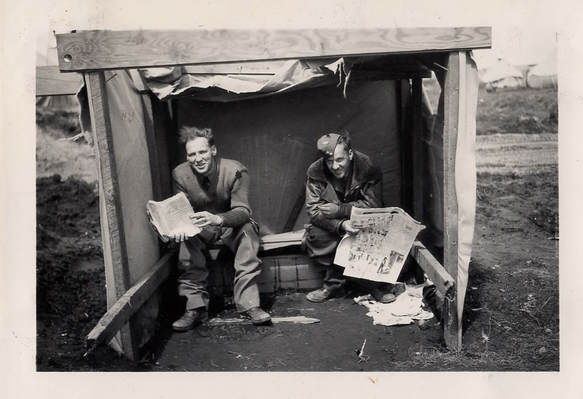
This, perhaps inelegant, picture was in the collection of Flight Lieutenant (Pilot) Robert Lynch. He captioned it "Catching up on the news". I show it here not to embarrass Sergeant "Sugar" Sagar or Corporal Austen but to show just how primitive living conditions were at Amchitka Island. War is hell. Things could be worse: it could be snowing. Thanks to F/L Lynch's Granddaughter, Karen Abel, for sending this.
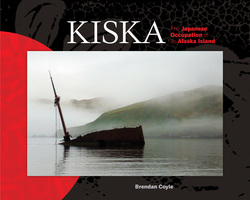
If you would like to see what it was like for the enemy to conduct its side of this war, see Kiska - The Japanese Occupation of an Alaskan Island by Brendan Coyle. Here is a blurb: "Brendan Coyle spent fifty-one days on the island searching out the tunnels, the equipment, and the objects, all frozen in time. Kiska brings together more than three hundred of the images Coyle amassed during his exploration and his archival research, bringing exciting new life to this moment in time. Accompanying explanations put the images in historical perspective, opening a window on a little-known battlefield and shining a rare light on a shadowy occupation."
Created in cooperation with the University of Alaska Press, the book is distributed by the University of Chicago Press.
You can order:
http://press.uchicago.edu/ucp/books/book/distributed/K/bo19092773.html
Created in cooperation with the University of Alaska Press, the book is distributed by the University of Chicago Press.
You can order:
http://press.uchicago.edu/ucp/books/book/distributed/K/bo19092773.html
The 111 pilots who rotated into Amchitka Island to take part in raids on Kiska Island. Summer, 1943
L-R Frank Skelly, Frank Crowley, Red McLeod, Ed Merkley, Hal Gooding, Cliff Hicks, Jim Gohl and Nick Stusiak They are sitting on a P-40 K-1. Note the long-distance extra fuel tank.
(Photo Credit: Department of National Defence, number PMR76-212, with appreciation to Major Mathias Joost)
L-R Frank Skelly, Frank Crowley, Red McLeod, Ed Merkley, Hal Gooding, Cliff Hicks, Jim Gohl and Nick Stusiak They are sitting on a P-40 K-1. Note the long-distance extra fuel tank.
(Photo Credit: Department of National Defence, number PMR76-212, with appreciation to Major Mathias Joost)
Fort Greely and Miller Field (renamed Marks Air Field),
on Chiniak Point, Kodiak Island, Alaska
(October 31, 1942 - August 12, 1943)
on Chiniak Point, Kodiak Island, Alaska
(October 31, 1942 - August 12, 1943)
On October 23, 1942, the squadron was ordered to leave Elmendorf. They were to go to Kodiak Island, Alaska. They would headquarter at Fort Greely and operate out of two bases on Kodiak Island: one at Fort Greely and the other, Miller Air Field, at Chiniak Point, only a few miles away from Fort Greely.
111 Squadron's mission on Kodiak was to patrol and protect the US Naval Base there, thereby freeing up USAAF squadrons to carry the battle to the Japanese in the South Pacific. They remained at Miller Field from October 31, 1942 until August, 1943 when they were ordered back to Patricia Bay, British Columbia.
To get to Kodiak Island, the ground crew and some of the pilots and officers took the train from Anchorage to Seward, Alaska where they loaded themselves and their gear aboard two passenger ships: the SS Denali and the SS Otsego. The Otsego had a particularly rough passage but all arrived safely. The aircraft were flown to Kodiak.
111 Squadron's mission on Kodiak was to patrol and protect the US Naval Base there, thereby freeing up USAAF squadrons to carry the battle to the Japanese in the South Pacific. They remained at Miller Field from October 31, 1942 until August, 1943 when they were ordered back to Patricia Bay, British Columbia.
To get to Kodiak Island, the ground crew and some of the pilots and officers took the train from Anchorage to Seward, Alaska where they loaded themselves and their gear aboard two passenger ships: the SS Denali and the SS Otsego. The Otsego had a particularly rough passage but all arrived safely. The aircraft were flown to Kodiak.
On October 28, the Squadron Daily Diary reported tersely: "The main party arrived at Kodiak at 14:15 hours. Disembarked at the Army Docks and rode through the mountains in Army trucks to new quarters. We are now quartered in 'Quonset Huts' with approximately twelve men to each hut."
Here is a first-hand (and more elaborate) account by 111 Squadron's Sergeant (Air Frame Mechanic) Lou Wise: "On arrival at Kodiak, we were taken to Penfield Ridge on the edge of the airport and ushered into Quonset huts where we would live. The Quonset huts were those semi-circular buildings made of corrugated steel for rigidity. They were set four feet deep into the ground. We were told this was for some protection in case of bomb attack. It also increased the warmth on cold winter nights. All in all, they were in fact quite comfortable as sleeping quarters. We were issued USAAF sleeping bags which proved to be very comfortable."
Here is Lou reporting on work conditions for the ground crew: "Aircraft that were not on patrol... had to be maintained in a state of readiness. Kodiak airport (Fort Greely) had two 6000 foot runways and one of 5400 feet. There were no hangers for maintenance. Instead, all work had to be done in the revetments where the aircraft could be kept under camouflage cover. The revetments were built by piling up mounds of earth in parallel rows with space between each mound to accommodate the wing span of the Kittys with a little extra space to move around in. The mounds were about 20 feet high. Heavy gauge chicken wire was then strung across the top of the mounds and strips of heavy brown canvas were woven into the chicken wire. That provided serviceable camouflage cover for the aircraft and the whole arrangement gave limited shelter from the weather for the AFM's and the AEM's working on maintenance tasks. During periods of high alert, many of our P-40's were kept on the readiness line outside the revetments."
AFM = Air Frame Mechanic or "rigger" AEM = Aero Engine Mechanic or "fitter"
As of November 4, 1942, Pilot Officer (Pilot) Eskil was the Commanding Officer at Point Chiniak. He had two other officer pilots, four NCO pilots and six aircraft under his command. His Ground Crew consisted of one Sergeant, one Corporal and 13 other Ranks. The ground crews worked two-week stints every other two weeks. P/O Eskil reported to Squadron Leader Boomer at the main Kodiak setting, Fort Greely.
Lou Wise had this to say about finding amusement on Kodiak Island:
"We did have time to do other things than work so we explored the town and located places of entertainment such as the USO, or the local movie house and there was even a bowling alley. Kodiak was essentially a clapboard, frontier town with small shops, assorted houses. restaurants and beer parlours."
from: Wise, Lou Chapter 4 The Alaskan Adventure, unpublished manuscript, provided by the author.
Corporal Max Crandall, an armourer with 111, remembered that after the privations and frigid conditions of Umnak, the men of 111 Squadron had this response to their new location: "Kodiak was greeted with great joy - like an oasis in the desert; the scenery was beautiful; the winds had ceased; it was the last of October with still no snow and it felt real warm. The Japanese current was in action and we were happy to feel its effect."
"There was a small post-exchange within fifty yards of our huts and we could buy chocolate bars at two regular sized bars for a nickel. All our necessities could be bought here and they were cheap. Down at the Army base there was a good-sized library with a lot of good books, and a department-store size post-exchange which carried just about everything. Also, at the Army base was a big service centre... if you liked to shoot craps, it was the place for it. ...in August, an ice cream stand was set up not far from the end of the runway...we could buy any flavor of ice cream we wanted."
"There was our own mess, our own doctor and dentist, and we could look after our own entertainment. Some bingo was played for a while but then we found that the latest movies were available and we showed them right there in the mess hall. "
Here is a first-hand (and more elaborate) account by 111 Squadron's Sergeant (Air Frame Mechanic) Lou Wise: "On arrival at Kodiak, we were taken to Penfield Ridge on the edge of the airport and ushered into Quonset huts where we would live. The Quonset huts were those semi-circular buildings made of corrugated steel for rigidity. They were set four feet deep into the ground. We were told this was for some protection in case of bomb attack. It also increased the warmth on cold winter nights. All in all, they were in fact quite comfortable as sleeping quarters. We were issued USAAF sleeping bags which proved to be very comfortable."
Here is Lou reporting on work conditions for the ground crew: "Aircraft that were not on patrol... had to be maintained in a state of readiness. Kodiak airport (Fort Greely) had two 6000 foot runways and one of 5400 feet. There were no hangers for maintenance. Instead, all work had to be done in the revetments where the aircraft could be kept under camouflage cover. The revetments were built by piling up mounds of earth in parallel rows with space between each mound to accommodate the wing span of the Kittys with a little extra space to move around in. The mounds were about 20 feet high. Heavy gauge chicken wire was then strung across the top of the mounds and strips of heavy brown canvas were woven into the chicken wire. That provided serviceable camouflage cover for the aircraft and the whole arrangement gave limited shelter from the weather for the AFM's and the AEM's working on maintenance tasks. During periods of high alert, many of our P-40's were kept on the readiness line outside the revetments."
AFM = Air Frame Mechanic or "rigger" AEM = Aero Engine Mechanic or "fitter"
As of November 4, 1942, Pilot Officer (Pilot) Eskil was the Commanding Officer at Point Chiniak. He had two other officer pilots, four NCO pilots and six aircraft under his command. His Ground Crew consisted of one Sergeant, one Corporal and 13 other Ranks. The ground crews worked two-week stints every other two weeks. P/O Eskil reported to Squadron Leader Boomer at the main Kodiak setting, Fort Greely.
Lou Wise had this to say about finding amusement on Kodiak Island:
"We did have time to do other things than work so we explored the town and located places of entertainment such as the USO, or the local movie house and there was even a bowling alley. Kodiak was essentially a clapboard, frontier town with small shops, assorted houses. restaurants and beer parlours."
from: Wise, Lou Chapter 4 The Alaskan Adventure, unpublished manuscript, provided by the author.
Corporal Max Crandall, an armourer with 111, remembered that after the privations and frigid conditions of Umnak, the men of 111 Squadron had this response to their new location: "Kodiak was greeted with great joy - like an oasis in the desert; the scenery was beautiful; the winds had ceased; it was the last of October with still no snow and it felt real warm. The Japanese current was in action and we were happy to feel its effect."
"There was a small post-exchange within fifty yards of our huts and we could buy chocolate bars at two regular sized bars for a nickel. All our necessities could be bought here and they were cheap. Down at the Army base there was a good-sized library with a lot of good books, and a department-store size post-exchange which carried just about everything. Also, at the Army base was a big service centre... if you liked to shoot craps, it was the place for it. ...in August, an ice cream stand was set up not far from the end of the runway...we could buy any flavor of ice cream we wanted."
"There was our own mess, our own doctor and dentist, and we could look after our own entertainment. Some bingo was played for a while but then we found that the latest movies were available and we showed them right there in the mess hall. "
"We played poker quite a bit - always small stuff, mostly penny-ante or ten cent limit... We did more reading than one might expect; I believe that we Canadians got more use out of the library than the Americans did. We were always going back and forth to the library and it was mostly Canadians we saw there.
There were two little mountains we climbed for exercise." ("Farm Boy Goes to War ", pages 39-40)
There were two little mountains we climbed for exercise." ("Farm Boy Goes to War ", pages 39-40)
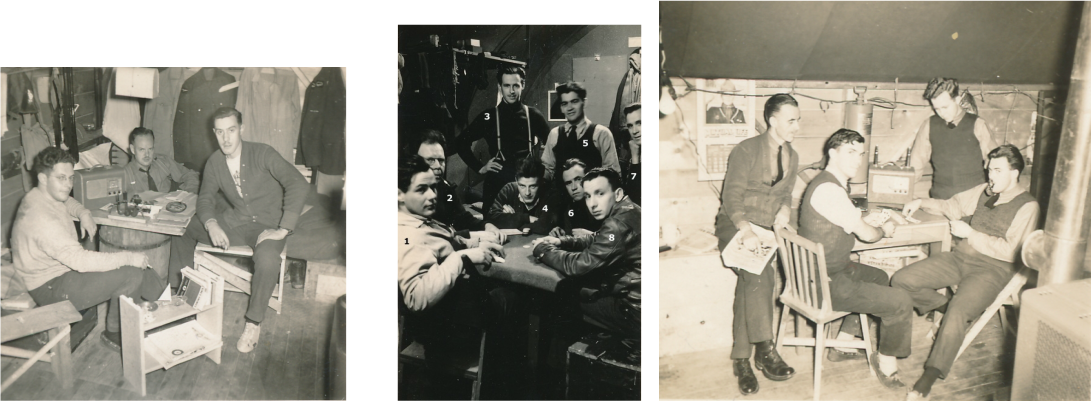
111 Squadron in tents: Left picture: "Ced's Tent: Maxie Tenebein, Freddy Robinson and Cedric Stringer. Note the homemade furniture. Middle: Kodiak Poker Game, in process. They are (LtoR): 1. Al Moreley , 2.A. B. Yoxall, the cook, 3. A.C. Killip, 4. "Smug" Sartore, 5. Mel Babcock, 6. Cedric "Ced" Stringer, 7.Harold Ward, 8. Sammy Steinberg. Right: "Our Tent, Euchre Night" Ced Stringer, Mel Babcock, A.C. Killip and Ken Moore. These photos from the Collection of A.C. Killip, courtesy of Karen Abel who got them from Levi Ballard, Alaska Military Museum, Fairbanks, AK. My gratitude to both.
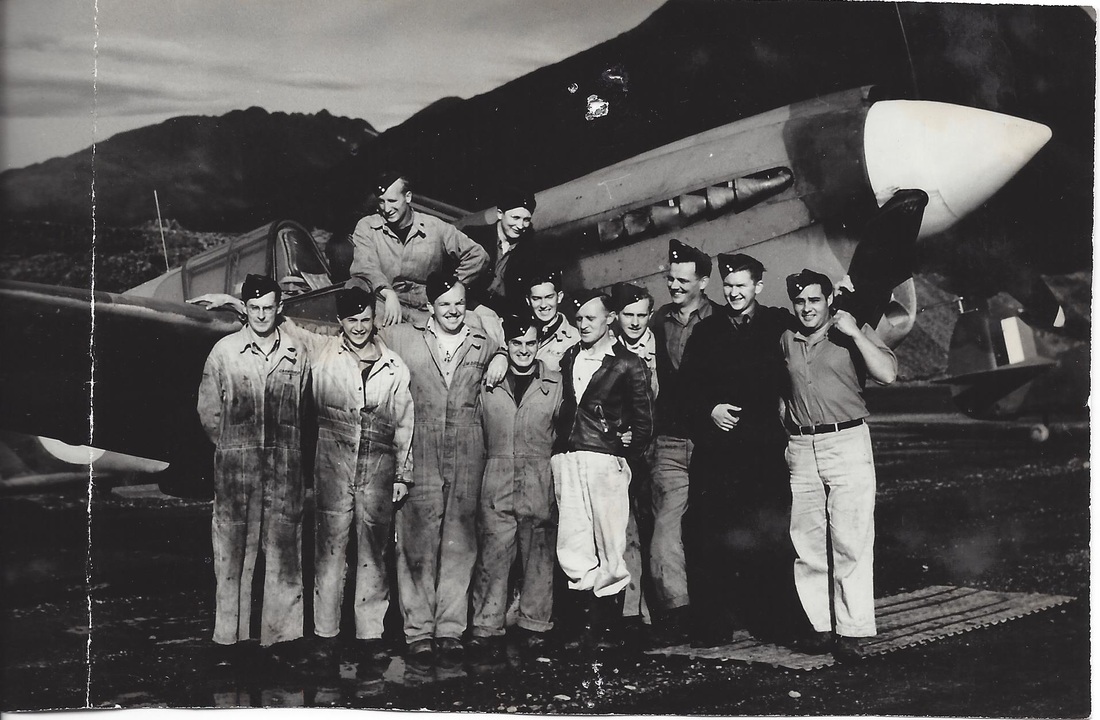
Ground Crew, 111 Squadron, at Miller Field, Point Chiniak, Kodiak Island, Alaska - Spring/ Summer, 1943. Note the piece of Marston Matt on the ground under Coutts and Molnar. Department of National Defence photo, number unknown. It was part of the Collection of Bill Mitchell and supplied by his son. Russell Mitchell.
Top L/ R: John Moss, Bill Mitchell; Bottom L/ R: Fred Ralphs, Gord Simmonds, Jeff M. Brennan;
George E. Lawrence, H.E. McIntosh, Carl Francis, John Sommers, Bill Cripps, Ken Coutts, and John Molnar.
George E. Lawrence, H.E. McIntosh, Carl Francis, John Sommers, Bill Cripps, Ken Coutts, and John Molnar.
Don Forbes, son of 111 Squadron Acting Sergeant (Air Frame Mechanic) John Alexander Forbes, remembered his father telling him about something he had seen while they were on Kodiak Island. "There was three or four of us on the crew, and we went out and did a routine check on a Kittyhawk. We had finished up our work a little early, and had some spare time. One of the fellas on the crew noticed a ship was pulling into the dock, so we decided to go over and have a look. A bunch of commandos came of the ship all banged up. Their legs and feet were all banged up. At first we thought maybe they had broken some ankles, or twisted knee's... as I recall, none of them came off under his own steam. We didn't know who they were,or where they came from, what outfit they belonged to. We had no idea at all... if they'd been in a scrape somewhere... but lord christopher ! it must have been rough... those commandos were a tough bunch... but we had no idea at all, at all ....".
What they were witnessing was the aftermath of the Battle for Attu Island. The United States forces had invaded Attu Island, one of the two Japanese strongholds in the Aleutians. The time was early May, 1943. The conditions on Attu were decidedly winter-like. It was very cold, there was a lot of snow and yet the ground was mushy tundra. The invasion plan depended much on surprise. Security was of utmost importance to the US leadership. To distract the enemy spies, the attacking units were trained on tropical beaches not frozen tundra. They did not know they were going north until they got there. Their clothing was poorly suited to Aleutian conditions but the U.S. Army had shipped all of its winter gear to Europe. Brendan Coyle picks up the story at this point: "The army's inability to supply GIs with proper cold-weather gear severely hampered the American effort, with casualties due to frostbite and exposure outnumbering those inflicted by the enemy ten to one. Water soaked through leather boots and froze the soldiers' feet. A lot of men developed frost-bite and had to have their feet or legs amputated." Coyle, Brendan, War on Our Doorstep, Surrey, B.C.: Heritage House; 2002, page 173. These facts had been relayed to Brendan Coyle by U.S. Army Major W. Jones.
Seeing such sights allowed the men who were serving in the Air Force to see first hand that they were a part of something big and dangerous.
What they were witnessing was the aftermath of the Battle for Attu Island. The United States forces had invaded Attu Island, one of the two Japanese strongholds in the Aleutians. The time was early May, 1943. The conditions on Attu were decidedly winter-like. It was very cold, there was a lot of snow and yet the ground was mushy tundra. The invasion plan depended much on surprise. Security was of utmost importance to the US leadership. To distract the enemy spies, the attacking units were trained on tropical beaches not frozen tundra. They did not know they were going north until they got there. Their clothing was poorly suited to Aleutian conditions but the U.S. Army had shipped all of its winter gear to Europe. Brendan Coyle picks up the story at this point: "The army's inability to supply GIs with proper cold-weather gear severely hampered the American effort, with casualties due to frostbite and exposure outnumbering those inflicted by the enemy ten to one. Water soaked through leather boots and froze the soldiers' feet. A lot of men developed frost-bite and had to have their feet or legs amputated." Coyle, Brendan, War on Our Doorstep, Surrey, B.C.: Heritage House; 2002, page 173. These facts had been relayed to Brendan Coyle by U.S. Army Major W. Jones.
Seeing such sights allowed the men who were serving in the Air Force to see first hand that they were a part of something big and dangerous.
Also in their spare time, the men could go into the village of Kodiak. The Brown Bear Cafe and the Cheechako Club must have got a fair share of their spare change.
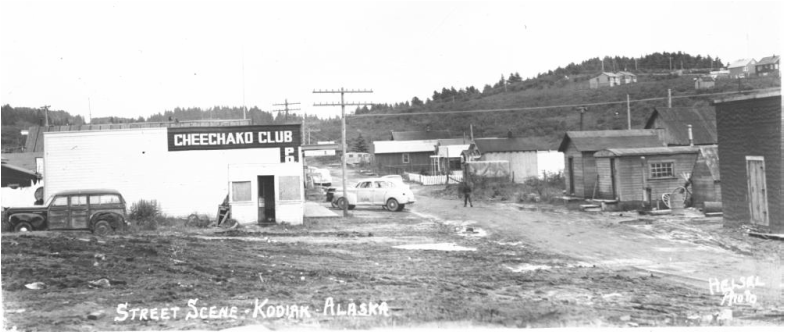
"Cheechako" was the term used to describe a newcomer to the mining industry in Alaska. This photo of the Cheechako Club came from the Underwood Collection and was posted by Joe Stevens on his website www.Kadiak.org, a vast collection of information and photographs describing Kodiak, Alaska's military history. See it but give yourself the afternoon to do it. It's a WOW! Note: the site's name is actually spelled Kadiak. He explains why on the site.
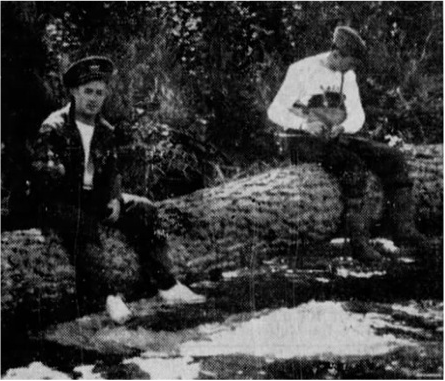
If you are going to be in Alaska, why not fish. Here are P/O Orr and WO2 Orthman, both 111 Pilots, going after trout. The picture appeared in The Winnipeg Tribune on November 20, 1942 (photographer not credited). The picture must have been taken at least a month earlier since by the time it was published, Orthman had left the squadron.
And there was always The Rack. Here is Aircraftman Ken Moore, probably startled by his roommate, camera in hand. Note the pin-ups: girls and planes. They were cramped but Ken seemed to have some things: on the table are a camera, a portable record player, his wedge hat and a girl's portrait.
These two photographs show 111 Squadron on their last Parade at Fort Greely, Kodiak Island, Alaska. They had completed their tour of duty in Alaska and were about to return to Canada, to Patricia Bay. The Squadron Daily Diary mentioned that squadron photos were taken while on Parade on July 29, 1943. These are, without doubt, two of the photos from that day. That would have been Squadron Leader Ramsay at the front of the Parade. The unit is arranged in three "flights." I can make out Flight Lieutenant Jim Gohl leading the first flight and Flight Lieutenant Hal Gooding leading the second. The squadron left Kodiak on August 12. Note that while the Canadian Air Force paraded, construction activities continued. They were still urgently preparing for an invasion against the Japanese forces on Kiska Island. They were probably lengthening the field to handle the heavy bombers they would need in the invasion. As things turned out, the Japanese evacuated the island in the fog in late July. The invasion would no longer be required.
(These are Department of National Defence photos (bottom: PL 76-199) but I do not know the numbers of the top one. The top one is from the Collection of Squadron Leader Ramsay and is here courtesy of his daughter and son-in-law, Anne and Bo Jensen). I found the bottom one in Corporal (Armourer) Max Crandall's book Farm Boy Goes to War, page 43. I wonder if there are any other copies of it "out there". If so, I would love to have a digital copy. It would be much clearer than this scanned copy.
(These are Department of National Defence photos (bottom: PL 76-199) but I do not know the numbers of the top one. The top one is from the Collection of Squadron Leader Ramsay and is here courtesy of his daughter and son-in-law, Anne and Bo Jensen). I found the bottom one in Corporal (Armourer) Max Crandall's book Farm Boy Goes to War, page 43. I wonder if there are any other copies of it "out there". If so, I would love to have a digital copy. It would be much clearer than this scanned copy.
Go to this website to get fly-over views of some of the remote, and no longer in service, airfields of Alaska.
http://www.airfields-freeman.com/AK/Airfields_AK.htm
http://www.airfields-freeman.com/AK/Airfields_AK.htm
Morale in 111 Squadron during Operations in Alaska and the Aleutian Islands
Military operations are seldom carried out on the perfect terrain. Fields of battle tend to become harsh and unpleasant environments even under the best of circumstances. But Alaska and the Aleutians were far from perfect environments. The landscape was austere. The weather was harsh with wild winds, incessant fog and cloudiness, frigid temperatures, even in Spring and Fall. Living conditions, at least on the islands, bordered on primitive. Food re-supplies were irregular and too infrequent. And so was mail call. Everyone was very far from home.
While the units did everything they could to arrange for their own entertainment, there was little to do to distract from the crushing boredom. They played hockey, soccer, baseball, volleyball, sometimes several games in an evening. They improvised furniture and amenities in their quarters. They gambled, albeit for small stakes. They developed a library. Indeed, the reports that went up the chain of command invariably stated that, in general, the health of the Airmen was very good and that their morale was high.
But the tension of battlefield conditions plus isolation and deprivation were very hard on some Airmen. And they had a great deal of time on their hands.
The Medical Officer with the Squadron, S/L Robert J. Cowan, is still alive and responded to my question about his experiences as a doctor while with 111 Squadron in the Aleutians. According to Dr. Cowan, “I must first say that I was very young and had no experience in diagnosing the problems of men who were not physically ill... Generally, those who presented themselves at sick parade were either hung over after one of the fly-ins of booze from Dutch Harbor or those I then assumed would prefer to spend their day in their bunks instead of carrying out whatever duties had been assigned on the many days where the weather made it impossible to fly or do anything else that might be considered useful. It was only much later in life that I understood that for some of them the stress of the isolation, the absence from their families, and other problems were taking a toll.”
Dr. Cowan has also told his daughter, Jane Cowan, that he had heard Airmen express worries that their families couldn’t get by on their very low pay.
There were two AWL (Away Without Leave) charges laid on men who had been away for a considerable amount of time. There are no details about where they went while AWL or what they did, but AWL events tend to occur when soldiers are desperate to be away from their units. The risk of being caught was very great since they were on an island and yet their need to be away was so pressing that they made the attempt. The Daily Diary only spoke of two such incidents. They were dealt with severely. There may have been others. The Diary also noted one incident of failure to obey an order and a couple of incidents in which Airmen failed to show up for work on time or missed a shift. How these incidents were handled and the circumstances governing them were not recorded. Nevertheless, they do speak to momentary breaks in discipline.
In any case, while the men who served in this unit did what they could to make the duty as comfortable as possible, the odds were working against them and some suffered mightily. Recognizing that it was very hard and taxing duty only makes one realize the significance of their sacrifice as they made their contribution to Canada’s security.

